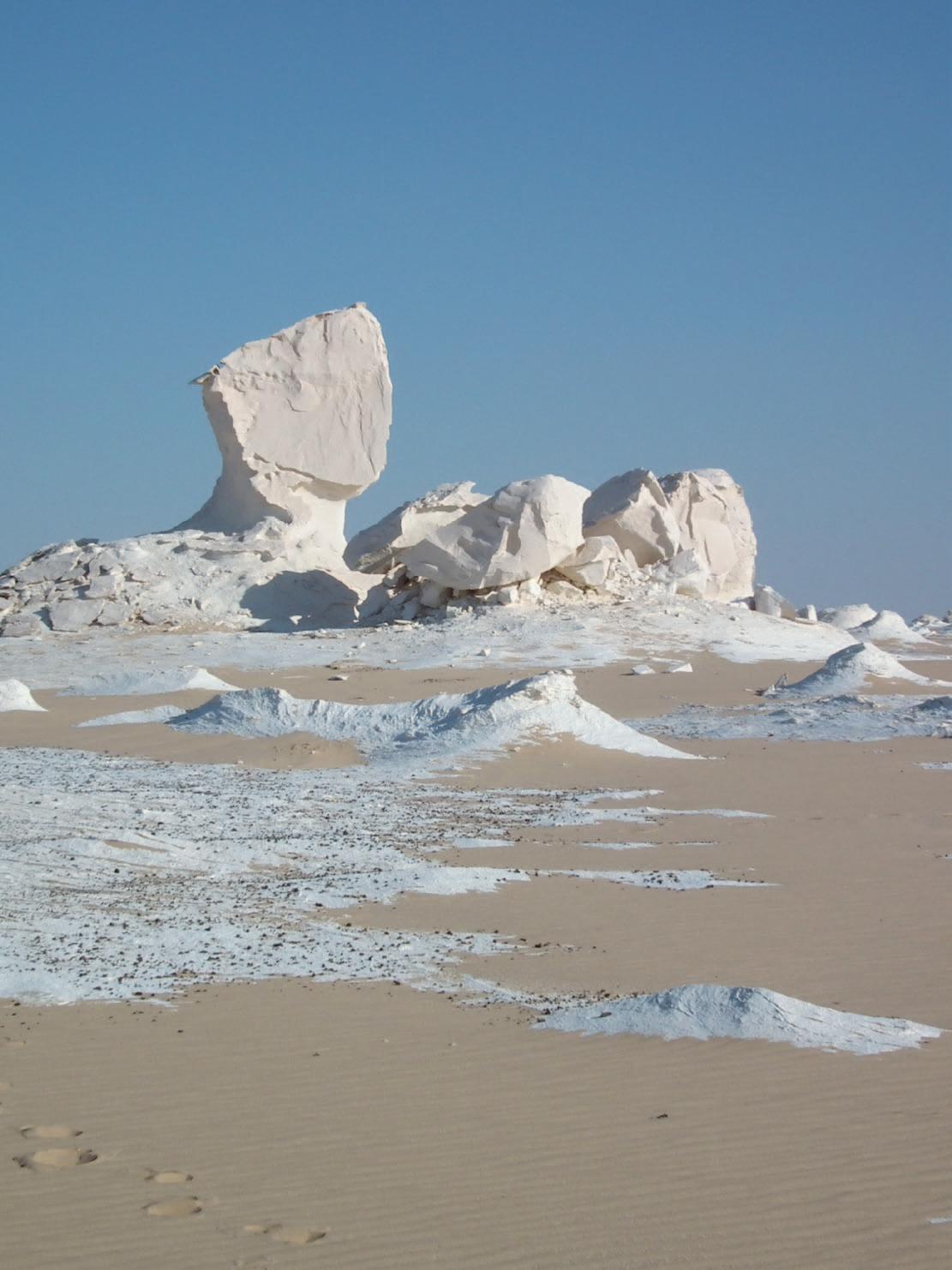

Follow the Leader.
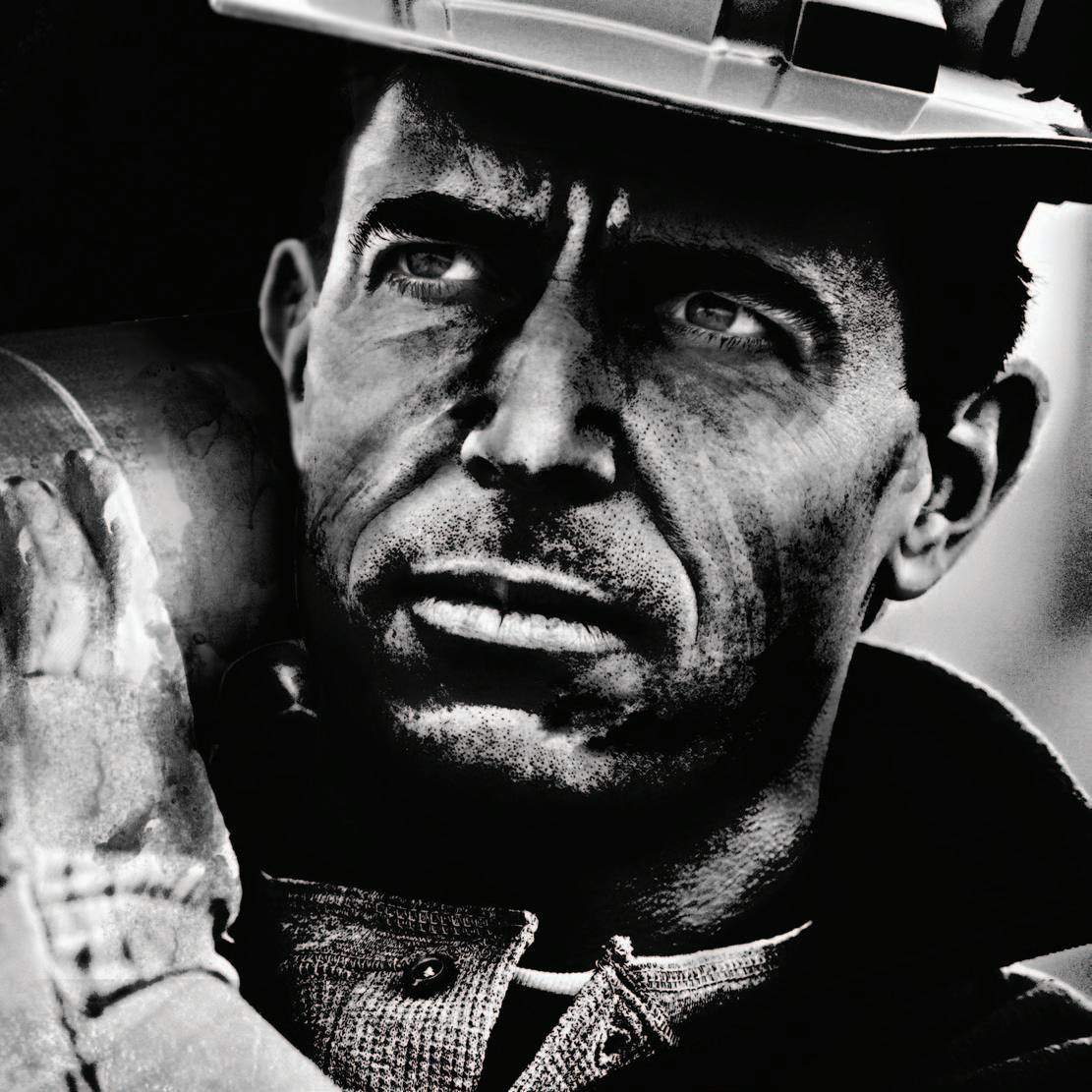
The global industry leader in critical information and insight, IHS continues to invest in the progress of the Canadian energy market so you can get from discovery to drilling in record time. By updating, improving and streamlining our Canadian products and services, we have delivered workflow integration between IHS PETRA® and IHS AccuMap®; created solutions for better access to global resources, from well log databases to subject matter experts; and continued to provide transparency and insight to Canadian energy businesses that need actionable information.
See how IHS is investing in Canada at www.followihs.com.

CSPG OFFICE
#110, 333 – 5th Avenue SW
Calgary, Alberta, Canada T2P 3B6
Tel: 403-264-5610
Web: www.cspg.org
Office hours: Monday to Friday, 8:30am to 4:00pm
Executive Director: Lis Bjeld
Tel: 403-513-1235, Email: lis.bjeld@cspg.org
Member Liaison: Bea McDowell
Tel: 403-513-1226, Email: bea.mcdowell@cspg.org
Communications and Publications: Caitlin Young
Email: caitlin.young@cspg.org, Tel: 403-513-1230 Programs Development: Aileen Lozie
Tel: 403-513-1227, Email: aileen.lozie@cspg.org
Accounting and Office Administration: Kasandra Klein Tel: 403-513-1233, Email: kasandra.klein@cspg.org
Corporate Sponsorship: Lis Bjeld Tel: 403-513-1235, Email: lis.bjeld@cspg.org
EDITORS/AUTHORS
Please submit RESERVOIR articles to the CSPG office. Submission deadline is the 23rd day of the month, two months prior to issue date. (e.g., January 23 for the March issue).
To publish an article, the CSPG requires digital copies of the document. Text should be in Microsoft Word format and illustrations should be in TIFF format at 300 dpi., at final size. For additional information on manuscript preparation, refer to the Guidelines for Authors published in the CSPG Bulletin or contact the editor.
Technical Editors
Ben McKenzie Colin Yeo (Assistant Tech. Editor) Tarheel Exploration EnCana Corporation Tel: 403-277-4496 Tel: 403-645-7724 Email: bjmck@live.com Email: colin.yeo@encana.com
Coordinating Editor
Caitlin Young, Publications Coordinator, CSPG Tel: 403-513-1230, Email: caitlin.young@cspg.org,
ADVERTISING
Advertising inquiries should be directed to Caitlin Young, Tel: 403-513-1230 email: caitlin.young@cspg.org. The deadline to reserve advertising space is the 23rd day of the month, two months prior to issue date.
The RESERVOIR is
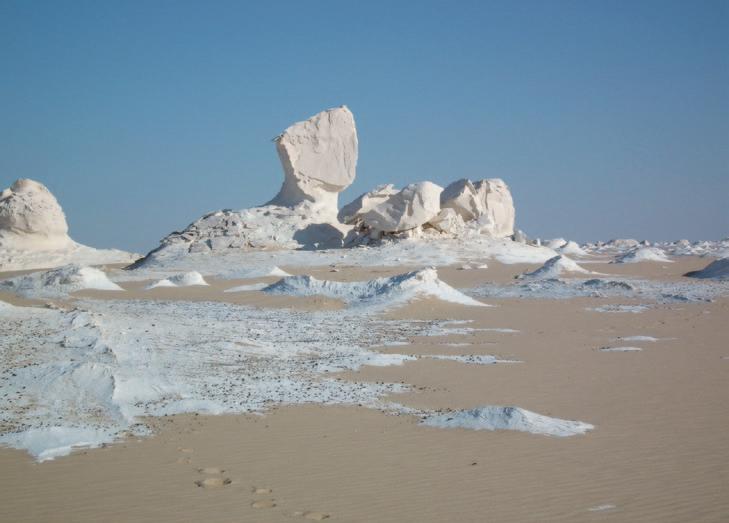


They can copy us. They just can’t be us. If imitation is the sincerest form of flattery, we’re one flattered group. Drawing on a quarter century of oil and gas experience, geoLOGIC continues to be the market leader in data, software solutions and support. And while we lead the way, our competitors desperately create parity products, sometimes years after us. For details on how geoLOGIC leads the way, visit www.geoLOGIC.com/leader
Leading the way with customer-driven data, integrated software and services for your upstream decision-making needs.
geoSCOUT | gDC | petroCUBE at www.geoLOGIC.com














CSPG EXECUTIVE
President
Robin Mann • AJM Deloitte rcmann@deloitte.ca Tel: (403) 648-3210
Vice President
Paul MacKay • Shale Exploration Ltd. Paul.Mackay@shalepetroleum.com Tel: (403) 457-3930
Past President
Kirk Osadetz • Geological Survey of Canada, Calgary kosadetz@nrcan.gc.ca Tel: (403) 292-7022
Finance director
Andrea Hood • geoLOGIC systems ltd. ahood@geologic.com Tel: (403) 262-1992
assistant Finance director
Samantha Etherington • CNRL samantha.etherington@cnrl.com Tel: (403) 386-6459
Program director
Jon Noad • Murphy Oil Corporation jon_noad@murphyoilcorp.com Tel: (403) 294-8829
assistant Program director
Dave Russum • AJM Deloitte drussum@deloitte.ca Tel: (403) 648-3228
serVices director
Michelle Hawke • Apache Canada Ltd. Michelle.Hawke@apachecorp.com Tel: (403) 261-1200
assistant serVices director
Mike Seifert • Canadian Discovery mseifert@canadiandiscovery.com Tel: (403) 269-3644
communications director
Jim Barclay • ConocoPhillips Canada
Jim.E.Barclay@conocophillips.com Tel: (403) 532-3889
assistant communications director
Curtis Evans • ERCB curtis.evans@ercb.ca Tel: (403) 297-8386
outreach director
Simon Haynes • Statoil Canada Ltd. sihay@statoil.com Tel: (403) 724-0364
assistant outreach director
Dawn Hodgins • Imperial Oil Resources dawn.hodgins@exxonmobil.com Tel: (403) 232-5931
executiVe director
Lis Bjeld • CSPG lis.bjeld@cspg.org Tel: (403) 513-1235
EXECUTIVE COMMENT
A message from the Programs Director, Jon Noad
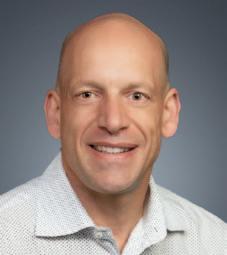
Get Involved!
We are very fortunate within the CSPG to be members of one of the most active geological societies in the world. Our Society offers every single member the opportunity to get involved in everything and anything that the CSPG has to offer. Nowhere is this truer than within the Technical Programs portfolio of offerings. How can our average member contribute? It may be through attending cuttingedge presentations on a sweeping variety of geological and related themes, or through participating in Field Trips and Short Courses offered to our members throughout Canada. Alternatively, every one of us might consider stepping up to the plate and actually giving a talk, or running one of these courses. I am certain that all of you have knowledge to share with your fellow members.
As far as presentations go, Programs offers both the Technical Luncheon talks and the Technical Division talks. The Technical Luncheon presentations often leave the first-time attendee in awe at seeing up to 600 or more geologists convening to listen to wide-ranging talk topics over a delicious lunch. The Technical Luncheon Committee commissions no less than 18 talks a year for your delectation. The format provides an ample chance to network and catch up with friends and colleagues before sitting back to soak up knowledge. Details and abstracts can always be found within the Reservoir and on the CSPG website.
The Technical Divisions work their magic in a smaller, more intimate setting. Each division represents an area of specialization, and therefore these talks are a great opportunity to build your specialized knowledge and socialise in a more relaxed and informal atmosphere. The eight divisions provide an incredibly wide range of topics, and I can confidently promise that there is something for everyone. In fact, you may feel the need to attend several divisional talks to hear
about different aspects of the play on which you are working – its structural complexity, international analogues, or its sedimentological or paleontological aspects for example. Last year the divisions offered up 31 talks, all with the chance to ask questions and mingle with like-minded fellow geologists. Lasting relationships may be forged in such a setting.
Last but (very much) not least, the Continuing Education Committee looks after Short Courses and Field Trips. While there is a focus on the annual Convention in May, with 25 short courses and 12 field trips currently planned for this event in 2012, many other courses and field trips will be offered both during Education week in October and throughout the year. The Committee strives to provide exciting, relevant, and high-quality offerings covering a wide variety of topics. If you do see a possible gap in what is offered then I strongly urge you to contact me, or any member of the Committee, and volunteer your services to run a course. New initiatives in 2012 include the development of a Training Matrix through which the members can tailor their individual training requirements, and it should provide an important tool for planning career development. We have also decided to run more of the field trips in the summer months to minimize problems with Canada’s somewhat unpredictable weather.
Taking on the role of Assistant Program Director in 2012 is Dave Russum, with whom I am really looking forward to working through the coming year. He is a long-time CSPG volunteer in a variety of areas, whose experience will prove very useful in his latest role. Please feel free to contact either of us with new ideas or suggestions for ways that we can serve you better. We provide stewardship of the three prongs of the Programs fork as best we can, but it is the dedicated members of these committees that wield the cutlery! (Continued on page 7...)
Need a solution that will take you to oil faster?
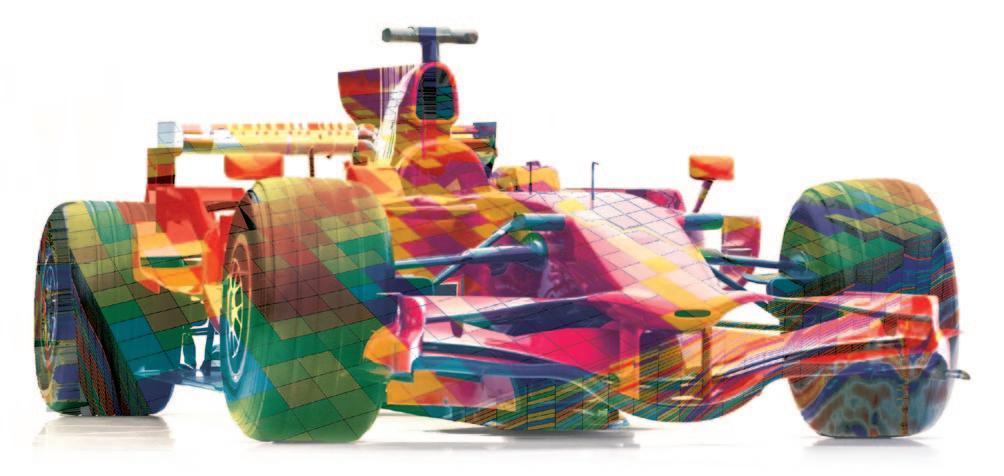
Introducing the DecisionSpace® Desktop unified workspace
Now your entire asset team can collaborate in real time using one unified workspace. Accelerate analysis and interpretation by sharing a common subsurface framework. Reduce cycle time and improve accuracy by examining more scenarios faster. Improve your returns in the field and in the office with industry-leading science and unmatched usability. Learn more at halliburton.com/decisionspacedesktop High Science Simplified®

CORPORATE SPONSORS
Dia M on D
IHS
GEOLOGIC SySTEMS LTD
SCHLUMBERGER CANADA LTD.
Platinu M
CENOVUS
CONOCOPHILLIPS
ENCANA
IMPERIAL OIL
NE xEN INC
SHELL
TALISMAN ENERGy
POGGENPOHL
GolD
APEGGA
CSPG EDUCATIONAL TRUST FUND
DEVON CANADA
IMPERIAL OIL
SHELL
WEATHERFORD L ABORATORIES
Silv E r
ENERPLUS
JEWEL SUITE
ROx AR
TAqA NORTH
Bronz E
ATHABASCA OIL SANDS
BLUEBACk RESERVOIR
PARADIGM
GEOVARIANCES
CSEG FOUNDATION
HUSky ENERGy
LORING TARCORE LABS
ROkE TECHNOLOGIES
RPS BOyD PETROSEARCH
HALLIBURTON ENERGy SERVICES
SUNCOR ENERGy
SUNDOG PRINTING
AS OF FEBRUARY 10, 2012
(...Continued from page 5)
To provide a few details of these loyal volunteers:
C
ONTINUING E DUCATION
Carrie kukko chairs this very active committee, which ensures that a wide variety of Short Courses and Field Trips are offered throughout the year, as well as at Convention and during Education Week. Supporting Carrie is a large group of committed volunteers and CSPG office staff that provide the bulk of formalized training opportunities for the members each year. The Society is currently working to develop a Training Matrix to help inform your choices of courses, as mentioned above. Information on all course offerings can be found on the CSPG website and in the Reservoir.
T ECHNICAL LUNCHEONS :
The 2012 chairs are Ryan Mohr and Riona Freeman, both who bring valuable experience and insight in their continuing roles. The Technical Luncheon Committee organizes up to two full-scale talks each month, ranging in scale and scope from the microscopic to the galactic. These talks are the biggest single CSPG gatherings outside of Convention and provide a good opportunity to reconnect with friends and colleagues over lunch, while learning at the same time. Schedules of upcoming talks can be viewed on the website Development Calendar and contact information can be found at www.cspg.org.
T ECHNICAL DIVISIONS
There are currently eight active Technical Divisions that provide lunchtime and evening talks on a wide variety of topics. Each Division represents an area of specialization, and therefore these talks are a great opportunity to build your specialized knowledge and chat in a more relaxed informal atmosphere. The division chairs are:
Basin a nalysis and Sequence
Stratigraphy:
Mark Caplan and Steve Donaldson
Core and Sample:
Doug Hayden
Environment:
Andrew Fox
Geomodeling:
Weishan Ren
Heavy o il Sands:
Nicole Keilly
i nternational:
Bob Potter and Trent Rehill
Paleontology:
Philip Benham
Structural Geology:
Darcie Greggs
I would also like to mention other aspects to which Programs contributes: Conventions and Conferences, both of which require many volunteers. The Annual Convention in Calgary in May, this year themed as “GeoConvention 2012: Vision,” and the Gussow Conference taking place in Banff this coming November, centring around a fraccing theme, are highly respected meetings. These are very successful conferences that attract participants from around the world, providing a forum for networking and exploring diverse topics related to a focused theme.
I will finish by thanking all those people who are involved with the Programs portfolio, most especially the committee members and Chairs. And a final plea to every one of you who have read this far: It does not take much to Get Involved. Attend some of these presentations, or give back something to your Society and community by volunteering as a committee member, speaker, or as a leader of a Short Course or Field Trip. I personally guarantee that you will not regret it. you will get the chance to meet new and interesting people, and have a great opportunity to share your knowledge and skills with them.
George Eynon: running for Council
l aurie Slezak: running for Council

Market leaders in chemostratigraphy
Global experience
Elemental chemostratigraphy
Stable isotope chemostratigraphy
Magnetic susceptibility stratigraphy
Re-Os stratigraphy
c algary, te L us convention centre c algary, a lberta
Please note: the cut-off date for ticket sales is 1:00 pm, tuesday, February 28, 2012
csPg member ticket Price: $42.00 + gst non-member ticket Price: $45.00 + gst
Each CSPG Technical Luncheon is 1 APEGGA PDH credit. Tickets may be purchased online at www.cspg.org
In March of 2011 a giant excavating machine in the Athabasca tar sands of northern Alberta exposed the rear half of what turned out to be a nearly complete ankylosaur (an armoured dinosaur) with only the tail missing. The specimen is estimated to be 113 million years old and comes from the Early Cretaceous. It was excavated over a three week period in April 2011 with the assistance of heavy equipment, and staff from the Suncor Millenium Mine. The find is significant for many reasons. It is the oldest known, complete dinosaur from Alberta. It is the first ankylosaur from the Early Cretaceous of Alberta in contrast to the more typical Late Cretaceous forms from the south of the province. It is the first dinosaur from the marine Clearwater Formation (better known for its ichthyosaurs and
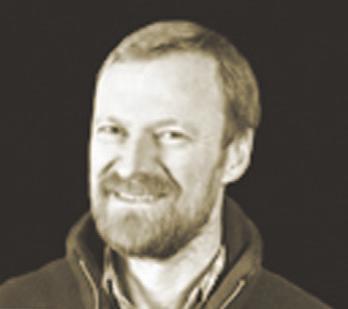
impressions of scales of alternating diamond and hexagon shapes in close association with the armour plates. There is a large cluster of unusual, pisolith-like bodies (up to 2cm in diameter) in the gut region, and these may represent stomach contents. Unfortunately, the bone is much softer than the concretion containing the specimen, and careful and responsible preparation will take several years.
B io G ra PHY
Don is the Curator of Dinosaurs at the Royal Tyrrell Museum, where he has worked for the past 5 years. Don obtained his undergraduate degree at the University of Toronto in Geology and Physics in 1992. He came to Alberta to take courses in paleontology and zoology at the University of Calgary, and to work as a technician at the Royal Tyrrell Museum during the summers of ‘94 and ‘95. Subsequently, Don went to the University of Bristol in England to pursue his Ph.D. in vertebrate paleontology studying theropod gait through computer models (’95 – ‘99). Don then moved to the US to hold an NSERC postdoctoral fellowship at the Johns Hopkins University – School of Medicine in Baltimore, Maryland from 1999-2001, after which he returned to the University of Calgary as a research associate and sessional instructor in Biological Sciences. Then, in 2006, Don joined the curatorial staff at the Royal Tyrrell Museum.
Tel. +1 832 252 7200



technicaL Luncheons
The French Alps – classic geology re-interpreted in
the light of passive margin geology and allocthonous
salt tectonics
SPEAKER
r od Graham
Research Associate, University of Cambridge AAPG Distinguished Lecturer
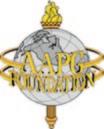
11:30 am tuesday, m arch 20, 2012 c algary, te L us c onvention c entre c algary, a lberta
Please note: the cut-off date for ticket sales is 1:00 pm, Wednesday, march 14, 2012 csPg member ticket Price: $42.00 + gst. non-member ticket Price: $45.00 + gst.
Each CSPG Technical Luncheon is 1 APEGGA PDH credit. Tickets may be purchased online at www.cspg.org
Just as an understanding of structural geometry in the field is essential in the interpretation of seismic data, so sometimes seismic data and the new ideas that stem from it enable us to see classic field geology in a completely new light, even though the data may come from a completely different geological setting or a totally different part of the world. This lecture describes how, a few years ago, our understanding of the geological evolution of one of the world’s classic mountain belts was transformed by reference to data obtained from the Atlantic passive margin, and how at the present time, our increased understanding of salt tectonics might be bringing about a similar shift in thinking.
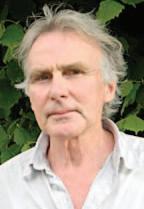
The understanding of salt tectonics has been transformed in recent years by the seismic imagery in places like Brazil and the Gulf of Mexico, augmented by inspirational physical modelling. I will try to apply this new knowledge to geology ‘on the ground’ in the sub-Alpine chains of Haut Provence in the southwestern Alps. In this part of the world, a very well exposed Mesozoic sequence showing rapid thickness and facies changes associated with Jurassic and Cretaceous extension on the margin of the Ligurian Tethys, has been deformed by a series of ‘Alpine’ compressional events that occurred from the Late Cretaceous to the Pliocene. Although the geology has been very well known for decades, aspects of the structure remained enigmatic and could not be explained by either Mesozoic extension or Alpine shortening alone. This talk will make the case that they resulted from salt tectonics that occurred not in the developing Alpine mountain chain, but on the seabed of a Late Jurassic continental slope, analogous, perhaps, to the Gulf of Mexico today.
A completely overturned, highly condensed Jurassic section is interpreted as the elevated roof of a salt body in a deep marine setting, which overturned as a ‘flap’ in the Middle Jurassic as allochthonous salt broke out at the sea floor. Later, Alpine compression exploited the weakness of the salt sheet as a major thrust zone. Although the ‘flap’ is in the footwall of the thrust, evidence of softsediment deformation and other anomalous structures within the flap suggest that it cannot have originated as an overturned footwall syncline.
Webcasts sponsored by
The ideas are prompted by seismic, the conclusions rely heavily on conventional field evidence. We geologists should never lose sight of our field-based roots.
BIOGRAPHY
Like many other geologists, Rod Graham was attracted to geology by a love of mountain walking, and an inspirational school teacher. He studied Geology in the University of Wales at Aberystwyth, graduated with first-class honours and went on to do a Ph.D. at Imperial College, London on the Precambrian basement rocks of the Western Isles of Scotland. After two years of postdoctoral work on geological strain in crystalline rocks he took up a lectureship in structural geology at the University of Wales at Swansea and his research interest shifted first to the Precambrian rocks of Africa, then to the structure and evolution of the French Alps.
During this time the geometrical ideas of ‘thin-skin tectonics’ were taking hold of the structural geology community. They were highly relevant (and new) in Alpine geology, but, more significantly, were proving important in hydrocarbon exploration, and so, after thirteen years at Swansea, Rod left academia and joined BP in a structural consulting role that enabled him to see the geology of a very great deal of the world. The last couple of years at BP were spent in Colombia at the time of the discovery and early development of the giant fields of the Llanos foothills. Rod developed a fascination with Colombia and its geology, which eventually took him from BP to consultant, business development, and exploration manager roles in Monument, Lasmo, and Emerald, all small companies with major interests in Colombia.
After Emerald, Rod took up a new global consulting role within the Hess corporation, which included substantial regional work in salt provinces, particularly the Gulf of Mexico.
Rod has published on a variety of topics in structural geology and tectonics. He will have retired from Hess by the time this talk is given, will have taken up a research associate role at the University of Cambridge, and will be doing as much geology as his wife will allow.
technicaL Luncheons APRIL LUNCHEON
Structural diagenesis, resource plays, the Highlands of Scotland, and curriculum development
SPEAKER
Stephen E. l aubach Bureau of Economic Geology
AAPG Distinguished Lecturer

11:30 am
tuesday, a pril 10th, 2012 c algary, te L us convention centre c algary, a lberta
Please note: the cut-off date for ticket sales is 1:00 pm, tuesday, a pril 3, 2012. csPg member ticket Price: $42.00 + gst. non- member ticket Price: $45.00 + gst.
Each CSPG Technical Luncheon is 1 APEGGA PDH credit. Tickets may be purchased online at www.cspg.org.
Structural diagenesis is the study of the relationships between deformation or deformational structures and chemical changes to sediments. In shale resource plays, in tight gas sandstones, and in many other rocks the cross-disciplinary structural diagenetic approach to fracturing, fault growth, compaction, and other mechanical processes is a key to unlocking scientific knowledge about a part of the Earth’s interior that is of great intrinsic and practical interest and a perspective that is increasingly important in the geoscience curriculum.
Using examples from core-based studies of shales and tight gas sandstones from Texas, Colorado, and Argentina, and outcrop examples from NW Scotland, this talk shows how this approach leads to new insights into fracture growth rates, how natural fractures evolve, how they may impact production, and how the surprisingly heterogeneous attributes of fractures can be better predicted and efficiently diagnosed. Some important remaining challenges are outlined that have implications for industry practice and for student training.
Webcasts sponsored by
BIOGRAPHY
Stephen E. Laubach is a geologist at the Bureau of Economic Geology with expertise in structure, fractures, diagenesis, fluid flow, and rock mechanics. His research focuses on chemical and mechanical interactions in rock. He has worked on geological and engineering issues pertaining to tight gas, shale gas, and coalbed methane since 1986. He supervises graduate students in the Geosciences Department of Geological Sciences and was first chair of the Jackson School Energy Geoscience Education and Research Group in 2008-2009.
Dr. Laubach served as a member of the Committee on Advanced Drilling Technologies, National Research Council from 1992–1994 and is a member of the National Research Council Committee to Assess the Deep Underground Science and Engineering Laboratory. He co-chaired the first North American Rock Mechanics Symposium in 1994. He was a Distinguished Lecturer for the Society of Petroleum Engineers in 2004 and was a Member of the Geological Society of America Panel on energy and mineral resources policy in 2007–2008. He is Elected Editor of the American Association of Petroleum Geologists (2010-present) and is a member of the AAPG Executive Committee.
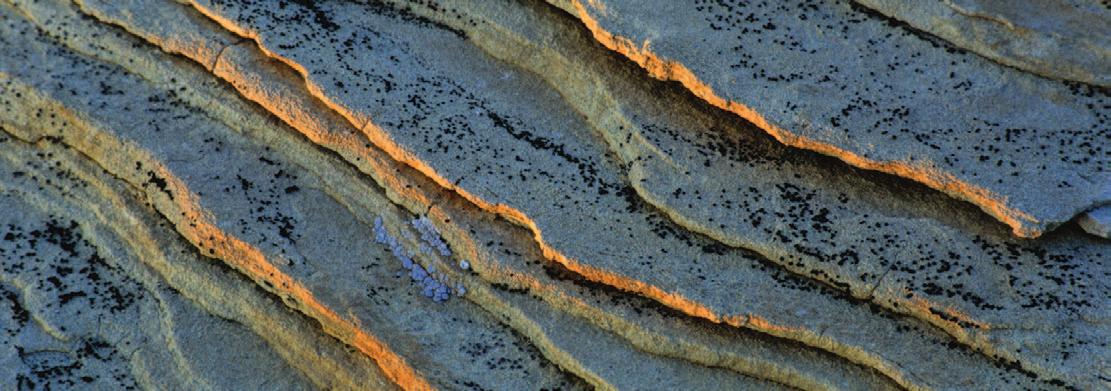
technicaL Luncheons APRIL LUNCHEON
Feathers and protofeathers in Canadian Cretaceous amber
SPEAKER
r yan C. McKellar Department of Earth and Atmospheric Sciences, University of Alberta
11:30 am
tuesday, a pril 24, 2012 c algary, te L us convention centre c algary, a lberta
Please note: the cut-off date for ticket sales is 1:00 pm, tuesday, a pril 17, 2012
csPg member ticket Price: $42.00 + gst. non- member ticket Price: $45.00 + gst
Each CSPG Technical Luncheon is 1 APEGGA PDH credit. Tickets may be purchased online at https://www.cspg.org/eSeries/source/ Events/index.cfm.
The main deposit of Canadian amber occurs within the Taber Coal Zone in the uppermost part of the Foremost Formation (Campanian in age). These coal seams have been mined in the vicinity of Grassy Lake, southern Alberta, leaving behind tailings piles where amber accumulates at the surface as a result of erosion. Grassy Lake amber and a secondary deposit of the same material along the shores of Cedar Lake in western Manitoba are collectively referred to as ‘Canadian amber’, and have been known for more than a century. Despite the length of time that this material has been studied, work upon the amber inclusions has been sporadic, and has typically focused on single groups of insects found as inclusions. Taphonomic studies have indicated that inclusions are present in one out of every 50 to 100 amber pieces collected, so large collecting efforts have
Seismic Data Room Rental Service (two secure private data rooms)
Divestiture Seismic Data Room Support (four portable workstations)
Seismic Project Conversions (between interpretation software)
Seismic Data Loading Service
Synthetic and 2D Model Generation
Georeference Service (Coordinate Transformation of Raster Images)
Geographic Coordinate Conversion Service
Well Location Plat Generation
Seismic Data Management Service
Professional Montage Display
Webcasts sponsored by
been key to our understanding of the deposit’s assemblage. As a result, many of the largest advances in our knowledge of the assemblage have taken place within the last two decades.
In a recent survey of Grassy Lake amber within the Royal Tyrrell Museum of Palaeontology collections, the Leuck family collection (Medicine Hat), and University of Alberta specimens, feather fragments were observed as a very rare component in the assemblage. Within the more than 4,000 inclusion-bearing amber pieces observed, 11 feather specimens were discovered. Surprisingly, this find constitutes the most abundant and diverse suite of feather fossils yet documented from a Mesozoic amber deposit. The suite of feathers is exceptional in that alongside feather fragments structurally indistinguishable from those of modern birds, the amber also contains simple (unbranched) feather types. These ‘protofeathers’ had previously been discovered as compression fossils surrounding dinosaur skeletons in the Lower Cretaceous of Liaoning, China, but are unknown from modern bird plumage, suggesting a dinosaurian source.
In addition to preserving both ends of the evolutionary-developmental spectrum for feather morphologies, Canadian amber preserves plumage with a high degree of fidelity. The amber displays good clarity, and bears little in the way of a suspended particulate load. This, coupled with the practice of embedding and slide-mounting specimens for long-term preservation, has provided the opportunity to observe pigmentation and micrometer-scale structures within the plumage. Pigment distribution and intensity indicate plumage colours ranging from white to nearly black within the sample set, with some specimens displaying visible reddish-brown colouration. Among the feather fragments comparable to modern bird plumage, fine structural details of the barbules also indicate specific functions. Much of the plumage is plumulaceous (downy) in structure, but some specimens possess barbules specialized for forming vaned flight feathers. One specimen in particular possesses distinctive, coiled barbules that are only found in modern bird feathers adapted for water uptake (to facilitate transport to the nest or diving behavior).
Canadian amber provides a snapshot of feather morphologies, appearances, and functions within a Late Cretaceous palaeoforest. Although the plumage is not found in direct association with skeletal material, the amber record provides unmatched preservation and is a valuable addition to the vertebrate fossil record of Alberta.
BIOGRAPHY
Ryan McKellar is currently a Postdoctoral Fellow at the University of Alberta. He was educated at that institution, with degrees spanning a range of palaeontological topics including: vertebrate palaeontology, particularly theropod dinosaurs (B.Sc., Honours); invertebrate palaeontology, specifically the Devonian phacopid trilobites of Morocco (M.Sc.); and palaeoentomology (Ph.D.). His doctoral dissertation dealt with inclusions in Canadian amber. The main focus of this work was parasitic Hymenoptera (microscopic wasps) in amber, but work on the deposit permitted the study of a number of other insect groups, along with unique inclusions, such as feather fragments. In addition to studying amber inclusions, he has been involved in the use of Fourier-transform infrared spectroscopy, and stable isotopic analyses of amber, in an effort to characterize various amber deposits. Combined with amber inclusions, this line of research has provided a more comprehensive picture of source trees in amber-producing forests, as well as some of the ecological conditions at the time of amber production.
Dr. McKellar is currently involved in an effort to expand the number of inclusion-bearing amber deposits being studied within western Canada, and has also resumed trilobite research. The ongoing amber research will provide a more comprehensive record of insect evolution, palaeo-forests, and terrestrial conditions throughout the Late Cretaceous and into the Paleocene. Alberta offers one of the most complete records throughout this time interval, as well as the opportunity to study amber in direct association with dinosaur remains.

Heavy Oil
Software
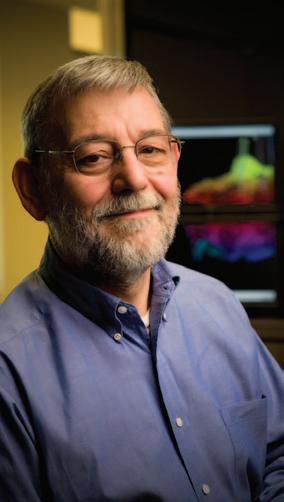
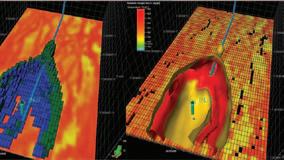
Whether you are modeling fullpad multitubing SAGD schemes, designing cyclic-steam and steam-flooding operations, or investigating hybrid steamsolvent or in situ combustion processes—you have everything you need to effectively plan and manage your heavy oil development.
With ECLIPSE, INTERSECT, and Petrel software, I’ve got what it takes. w ww.slb.com/heavyoilsoftware
Global Expertise
Innovative Technology
Measurable Impact
PETROLEUM INDUSTRY COURSES
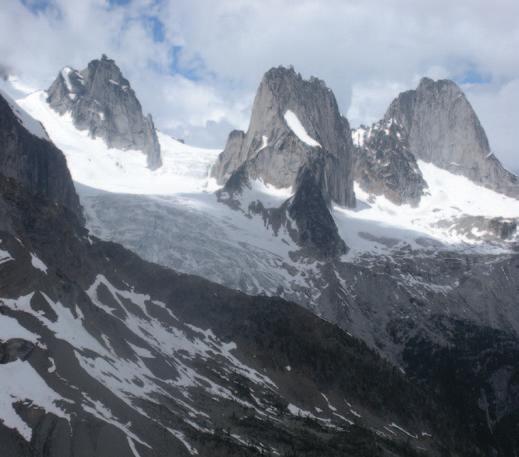
WHO SHOULD ATTEND
New geologists, engineers, geophysicists and landmen, as well as summer students entering the industr y for the first time will find the courses a very beneficial introduction to the petroleu m industry These courses will be extremely useful to nonprofessional and support staff in the oi l and gas industry, as w ell as accountants, lawyers, brokerage and financial personnel working primarily alongside the oil and gas industry.
TO REGISTER
To register or to obtain additional information regarding in-house and upcoming courses, please contact:
Ayrton Exploration Consulting Ltd.
Tel: (403) 262-5440
Email: ayrtonex@shaw.c a
Or visit our website: www.ayrtonexploration.com
VERVIEW OF THE OIL & GAS INDUSTRY IN WESTERN CANADA
Date: April 10th and 11th, 2012
Cost: $945 (includes GST)
Instructor: Bill Ayrton
Effective for personnel just joining the oil patch, or financial, accounting, and information systems personnel.
Learn about the many facets of the industry. finding, land acquisition, drilling, seismic, well completion, jargon and terminology.
GEOLOGY FOR NON-GEOLOGISTS
Date: May 15th and 16th, 2012
Cost: $945 (includes GST)
Instructor: Bill Ayrton
Effective for geological technicians or administrative staff, or for those who just want a better understanding of geology to appreciate the world around us.
• Learn about earth structure, geologic time-scale and processes, Western Canada geology, and interesting nearby locations.
• Participate in a r ock identification exercise , cross-section project and a mini-field trip in downtown Calgary.
GEOLOGY OF THE WESTERN CANADIAN SEDIMENTARY BASIN
Date: June 12th, 13th, and 14th, 2012
Cost: $1365 (includes GST)
Instructor: Bill Ayrton
Ideal for those who wish to improve their geological understanding of where and how we look for oil and gas fields in Western Canada.
• To visualize what Western Canada looked like throughout the stages of history, for example, the position of the sea versus land, what sediments were deposited, and what type of life that existed and evolved.
• To review the importance of each major stratigraphic unit, i.e. Devonian, Mississippian, Cretaceous, etc.
• Discuss the geological and seismic expression of typical oil and gas fields in each unit.

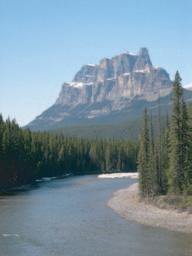
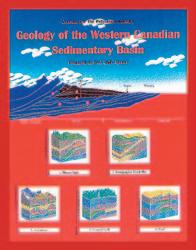
Bugaboo Spires, B.C.
Photo by: Bill Ayrton
diVision taLKs GEOMODELING DIVISION
Geostatistical facies modeling: state of the art and recent developments
SPEAKER
Matthieu Bourges Geostatistician Geovariances
12:00 n oon
Friday, March 9, 2012 tBD
Nowadays, a stochastic framework is recognized as a key tool for characterizing uncertainty in facies and property modeling for accurate prediction of volumes. Numerous dedicated simulation algorithms are available in most reservoir software packages, each with their pros, cons, and underlying assumptions. Choosing the
appropriate algorithm depends on the geological context, the type of available data, and the modeling objectives. Validating the adequacy of this algorithm and the quality of the results is also fundamental.
The main categories of geostatistical algorithms for modeling heterogeneous reservoirs are first recalled: pixel-based methods (Sequential Indicator, Truncated Gaussian, Plurigaussian), object-based approaches (Boolean models), MultiplePoint Statistics, and process-based algorithms (Flumy, Turmy). The emphasis is put on the importance of controlling the modeling parameters as well as geological properties such as facies proportions. The difficulty of conditioning the simulated models to actual data is overcome by using efficient converging algorithms. Also, nesting or combining different algorithms for modeling at different scales is sometimes compulsory.
Originally based on stationarity assumptions, these algorithms have been generalized to account for trends, most commonly
GeoEdges Inc.
Detailed and accurate geology at your fingertips in Petra, GeoGraphix, ArcGIS, AccuMap, GeoScout and other applications
Western Canada Geological Edge Set
Northern US Rockies & Williston Basin Geological Edge Set Appalachian Basin Geological Edge Set
North American Shales Geological Edge Set
Sponsored
focused on capturing proportion trends. However, it is sometimes important to capture variations of orientations (varying anisotropies) or changes in the underlying spatial structure itself. From this point of view, Local Geostatistics is a promising solution to tackle in a pragmatic way such non-stationarity issues.
Examples derived from real datasets will be presented to illustrate the different points.
BIOGRAPHY
Matthieu Bourges is a geologist graduated from the Ecole Nationale Supérieure de Géologie de Nancy (France) where he specialized in Hydrodynamics and Reservoir Engineering (sedimentology, hydrodynamics, geotechnics). He joined GEOVARIANCES in 2007. Matthieu is mainly involved in Oil and Gas consulting projects and training; he has broad experience in geostatistical applications for depth conversion, seismic data quality control and filtering, reservoir characterization, and volumetrics. He also contributes to the ISATIS Technical Support and documentation.
for information contact: Joel Harding at 403 870 8122 email joelharding@geoedges.com www.geoedges.com
Western Canada: Slave Point, Swan Hills, Leduc, Grosmont, Jean Marie, Horn River Shales, Elkton, Shunda, Pekisko, Banff, Mississippian subcrops and anhydrite barriers in SE Sask., Bakken, Three Forks, Montney, Halfway, Charlie Lake, Rock Creek, Shaunavon, BQ/Gething, Bluesky, Glauconitic, Lloyd, Sparky, Colony, Viking, Cardium, Horseshoe Canyon and Mannville CBM, Oilsands Areas, Outcrops
US Rockies & Williston: Red River, Mississippian subcrops & anhydrite barriers (Bluell, Sherwood, Rival, etc), Bakken, Three Forks, Cutbank, Sunburst, Tyler, Heath, Muddy, Dakota, Sussex, Shannon, Parkman, Almond, Lewis, Frontier, Niobrara, Mesaverde shorelines, Minnelusa, Gothic, Hovenweep, Ismay, Desert Creek, Field Outlines, Outcrops
North American Shales: Shale plays characterized by O&G fields, formation limit, outcrop, subcrop, structure, isopach, maturity, stratigraphic cross-sections. Includes: Marcellus, Rhinestreet, Huron, New Albany, Antrim, Utica-Collingwood, Barnett, Eagleford, Niobrara, Gothic, Hovenweep, Mowry, Bakken, Three Forks, Monterey, Montney, Horn River, Colorado
Appalachian Basin: PreCambrian, Trenton, Utica-Collingwood, Medina-Clinton, Tuscarora, Marcellus, Onondaga Structure, Geneseo, Huron, Antrim, New Albny, Rhinestreet, Sonyea, Cleveland, Venango, Bradford, Elk, Berea, Weir, Big Injun, Formation limits, Outcrops, Allegheny Thrust, Cincinatti Arch, Field outlines
Deliverables include:
-Shapefiles and AccuMap map features
-hard copy maps, manual, pdf cross-sections
-Petra Thematic Map projects, GeoGraphix projects, ArcView map and layers files
-bi-annual updates and additions to mapping
-technical support
diVision taLKs PALEONTOLOGY DIVISION
Paleo 2012
Presented in conjunction with the CSPG Palaeontological Division and Mount Royal University Earth Sciences Department
Mount royal university
4825 Mount royal Gate SW Calgary, a lberta
lectures and poster displays
Saturday, March 17, 2012, 9:00 a M to 4:00 PM
Workshops
Sunday, March 18, 2012, 9:00 a M to 4:00 PM
Saturday lecture events and poster viewings are free and require no registration. There will be fossil displays and activities of interest to a wide audience, including families, on the Saturday. Sunday workshops do require registration and a minor fee.
HUGH REID’S 2012
SPRING COURSES
NEW SHORTER DST COURSE (3 1/2 days) April 10-13, 2012
16 WAyS tO IDENtIfy ByPASSED PAy fROm DSt DAtA (more advanced, for those “comfortable” with DST charts) April 19-20, 2012
HyDRODyNAmICS
(Oil and Gas Finding Aspects) April 30- m ay 3, 2012
In-house courses available For course outline visit: www.hughwreid.com 262-1261
Satur DaY, MarCH 17tH
S PE a KE r SCHED ulE
All talks to be held in Jenkins Theatre, lower level of Mount Royal University
9:00 – 9:15 a M
Opening statement by Wayne Braunberger, APS President, and Symposium instructions by Mona Marsovsky.
9:15 – 9:45 a M
Headless Wonder - ongoing identification of a head-hunted hadrosaur quarry in Dinosaur Provincial Park, Alberta. Darren Tanke and Rhian Russell, Royal Tyrrell Museum.
9:45 – 10:15 a M
In Search of the Beautiful and Brainy: a Summer Studying Ankylosaurs in korea, China, and Mongolia. Victoria Arbour, University of Alberta.
10:15 – 10:30 aM Coffee Break
10:30 – 11:30 a M
When x-rays and dinosaurs collide: use of x-ray imaging in vertebrate paleontology.
François Therrien, Royal Tyrrell Museum.
11:30 – 12:00 PM
A review of hadrosaurid skin impressions from North America.
Phil Bell, Pipestone Creek Dinosaur Initiative. 12:00 – 1:00 PM Lunch break
1:00 – 1:30 PM
Could pachycephalosaurs head butt? Using engineering models to compare dinosaurs and mammals.
Jessica Theodore, Biological Sciences, University of Calgary.
1:30 – 2:00 PM
Please Do Not Touch the Dinosaurs: The Future of Public Natural History Education in Calgary, Cory Gross, APS, Public Outreach Committee.
2:00 – 2:45 PM Poster Session.
Poster presenters are requested to be with their posters
2:45 – 3:00 PM Coffee Break
Sponsored by
3:00 – 4:00 PM
The fossil record and systematics of dome-headed dinosaurs (Pachycephalosauria) from Alberta. David Evans, Royal Ontario Museum.
4:00 PM Finish
Sun DaY, MarCH 18tH
Wor KSH oPS
Room B213, Mount Royal University.
9 – 12 a M
Ankylosaur Fan Club
Presenter:
Victoria Arbour, University of Alberta Cost: $15 per person.
Get to know the ugliest of the dinosaurs, the armoured ankylosaurs! We will learn how to recognize ankylosaur fossils from Alberta, and how to tell different species of ankylosaurs apart. This will be a hands-on workshop with specimens and models to study, and will be appropriate for both children and adults.
Victoria Arbour is a Ph.D. student at the University of Alberta. She studies the diversity and biogeography of ankylosaurs, and has previously studied the biomechanics of tail clubbing in these amazing dinosaurs.
1 – 4 PM
Microvertebrate material from the Cypress Hills, Eocene of Saskatchewan Presenter:
Brian Rankin, University of Calgary Cost: $15 per person.
In this workshop, participants will learn about Eocene mammals and have the chance to help sort microvertebrate fossils.
Brian Rankin is a graduate student, working on his Ph.D. on late Mesozoic and early Cenozoic biogeography of mammals. He did his M.Sc. at the University of Alberta, supervised by Richard Fox.
To register for workshops contact Mona Marsovsky (403) 547-0182 or giftshop@ albertapaleo.org. Make the cheque payable to the Alberta Palaeontological Society, P.O. Box 35111, Sarcee Postal Outlet, Calgary Alberta, Canada T3E 7C7. Deadline for workshop registration is March 9, 2012. Registration is limited to 20 participants per workshop, so register early.
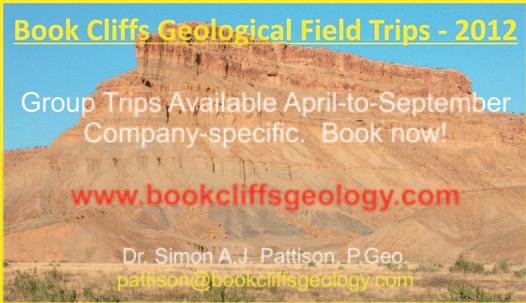
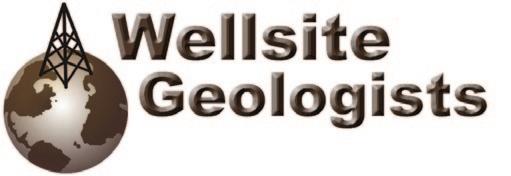
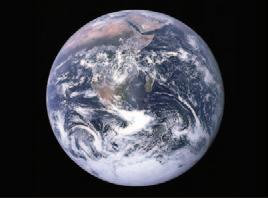


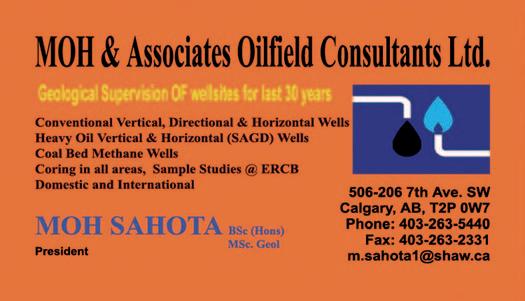
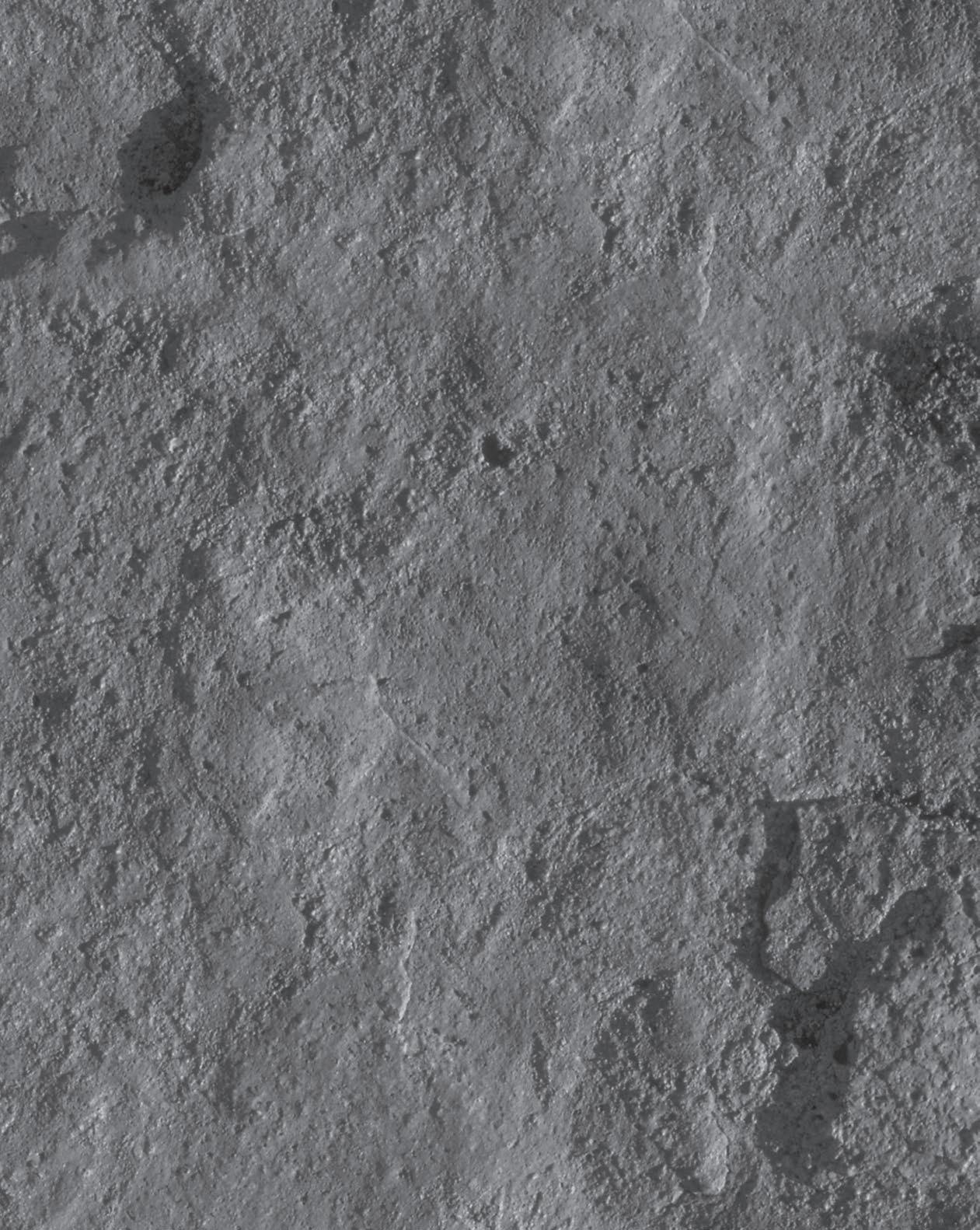

M ICROSEISMIC H YDRAULIC F RACTURE I MAGING
Part 2: Interpretation
| By Shawn C. Maxwell, Schlumberger
With the rapid expansion of unconventional shale and tight reservoirs, effective hydraulic fracture stimulation (fracing) is becoming increasingly important and a critical factor for economic success. Microseismic monitoring is the only proven method to track hydraulic fracturing as it grows from the well into the reservoir. Development of it has grown rapidly alongside the interest in unconventional reservoirs. Microseismic events are acoustic emissions associated with either fracture creation or activation and are used to image the hydraulic fracture geometry. Interpretation of the microseismic data can be used to determine fundamental characteristics of the fracture geometry including direction, length, height, and width or degree of complexity (variation from a single planar fracture, multiple parallel fractures, or a complex fracture network consisting of fractures in various directions). Temporal variation in these geometric aspects through the injection history provides insight into how the fractures grow and enables engineering evaluation of the factors controlling the geometry. Ultimately this validated engineering approach can lead to improved fracs and increased production or well performance.
This article is the second in a series describing microseismic frac imaging. In the first article, details of microseismic acquisition and processing were given, along with a discussion of the accuracy and sensitivity


of frac images. In this article, aspects of interpretation are described as well as some of the engineering workflows that use the hydraulic fracture image to modify various aspects of the hydraulic fracture stimulation. Subsequent articles will describe geological controls on frac growth and engineering applications of integrating microseismic imaging into workflows to improve the well, completion, and frac design.
INTERPRETATION
n o talk for March, join us in a pril for our next talk.
a ll are welcome to Division talks and no registration is required.
For more information, please contact Darcie Greggs at Darcie.Greggs@ huskyenergy.com.
Clearly the interpretation of the fracture geometry and orientation needs to account for estimated location uncertainty as shown in Figures 1 and 2. In these examples, the error ellipsoids are used to mitigate the location uncertainty when assessing the fracture geometry. Events can also be sorted to focus the interpretation on the more confident events with small location errors or high signal-to-noise ratio (SNR).
A popular metric of the microseismic data is a measure of the stimulated volume (SV), often referred to as the stimulated reservoir volume (SRV) or estimated stimulated volume (ESV). In unconventional resources, we are generally creating the reservoir by contact through fracing, so
the SV is an estimate of the size of the resource. These volumes can be measured from a “cloud” of microseismic events by drawing a rectangular box (or more sophisticated shape), or by using the event density to essentially “shrink wrap” the cloud and measure the associated volume. Engineers tend to favor the SV microseismic metric, although little attention tends to be given to the meaning and potential limitation of the measurement. These volumes are normally interpreted as the hydraulically activated volume, although the pumping of proppant late in the stimulation is likely making only a fraction of this volume effectively stimulated with enhanced permeability. The microseismically active volume can also include pre-existing fractures that are critically stressed and begin to deform seismically as the frac deformation changes the local stress state (e.g., Maxwell et al., 2009). The microseismic location uncertainty can also result in an overestimation of the SV as the microseismic cloud spreads out due to inaccurate locations (Figure 3, see details in the preceding article [February 2012 Reservoir, p.16] for background information associated with the figure). Figure 4 shows an example of a frac image and the impact of
Figure 1. Example of error ellipsoids. Event locations are shown on the top graphs, while the error ellipsoids for each event are shown on the bottom graphs.
Figure 2. Incorporating event location uncertainty into the interpretation of fracture height, length, and azimuth.
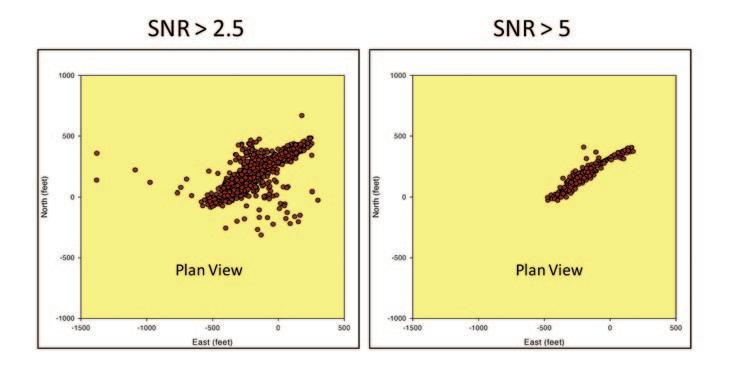
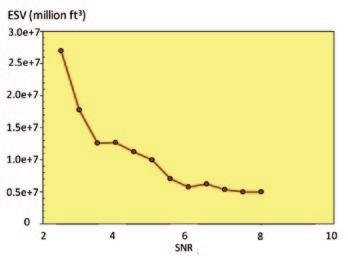

low SNR events overestimating the SV and potentially leading to a misinterpretation of fracture complexity (Figure 5). An important message is illustrated with this example: that it is not the quantity of microseismic events, but the quality that is important for a robust interpretation (Figure 6). In certain formations, stimulated volume has been correlated with well production. The volume measurement has also become commonly used as an estimate of the EUR and drainage area of shale reservoirs. However, care is needed in the interpretation due to the potential overestimation of the volume and the fact that only a portion is likely propped and effectively stimulated.
(Continued on page 20...)
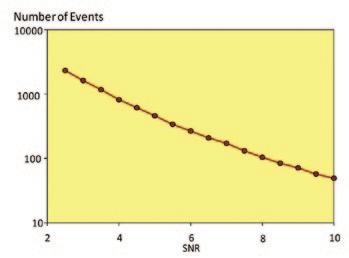

Figure 3. Impact of signal-to-noise ratio on microseismic event patterns.
Figure 4. Impact of data quality on SV calculation.
Figure 5. Impact of data quality on aspect ratio. As lower events are removed using SNR filtering, the interpretation of fracture complexity changes from complex to planar, with the aspect ratio decreasing from 1 to 0.1.
Figure 6. Number of events used in the interpretation as a function of SNR cutoff.
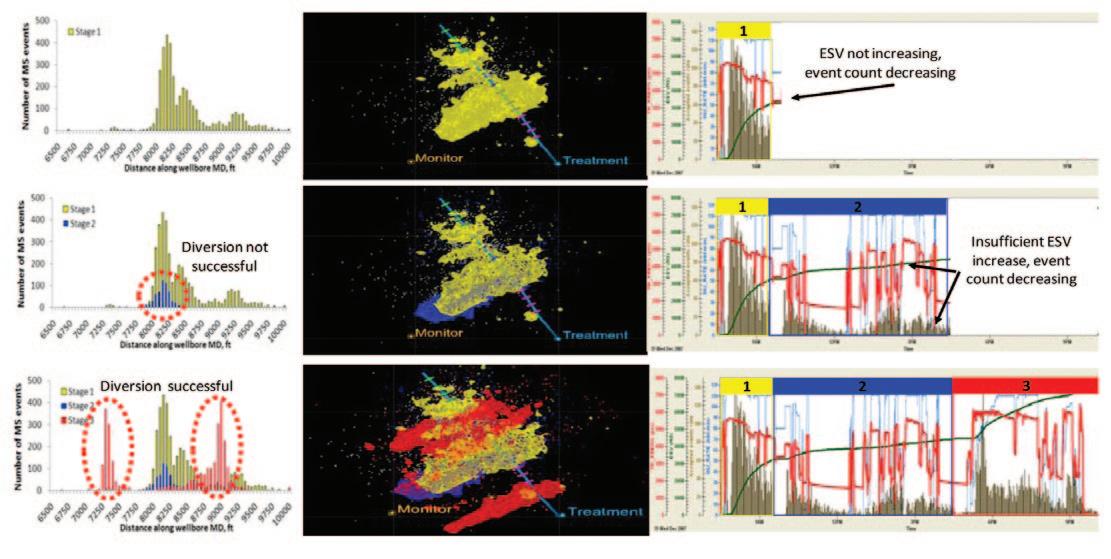
Figure 7. Interpreting fracture location and stimulation behavior in real-time by integrating treatment data with temporal and spatial evaluation of event histograms, event count, and ESV. Event histograms are shown on the left, spatial distribution of ESV in the middle, and treatment data integrated with ESV and event count are shown on the right graphs. Top graphs show the initial stage of a re-frac treatment, indicating the fracture is propagating in a similar location as the initial treatment. Middle graphs show the first diversion stage, indicating that the diversion was not successful as evidenced by the histogram of stage 2 event locations, spatial location of the stage 2 ESV, and the limited increase in ESV combined with a sharp decrease in event count. The stage 3 diversion design was modified based on the stage 2 evaluation. The bottom graphs shows the stage 3 diversion results, indicating successful diversion based on the histogram of event locations for stage 3, spatial location of the stage 3 ESV, and the large increase in ESV and event count.
(...Continued from page 19)
Another important aspect to interpreting microseismic data is the relationship between the hydraulic fracture and the observed microseismic deformations. Each microseism is a relatively high frequency slip during the tensile hydraulic fracture that is slowly pumped open throughout the duration of the stimulation. Many microseismic signals have relatively strong S-wave amplitudes relative to the P-wave, which implies a shear-slip mode of failure. A geomechanical paradox exists between the fast, shear microseismic movements and the slow, tensile fracture. Furthermore, investigations of the energy balance between the injection and microseismic points to significant amounts of aseismic deformation – meaning the main deformation is not observed with the microseismicity. While it is believed that the majority of microseismicity occurs proximal to the hydraulic fracture, understanding this paradox is important in order to interpret microseismic attributes beyond the location. This, in turn, will provide context for the interpretation of moment tensors or focal mechanisms and number of microseismic events. This is an important factor as the industry moves from simply interpreting the fracture geometry to attempting to extract more information from the microseismic to maximize its value.
A PPLICATIONS
Subsequent parts of this series of articles will focus on specific engineering applications and workflows associated with microseismic fracture mapping. However, a few general comments are included here with various applications. Microseismic is a unique geophysical method that was initially driven by the engineering community to understand and map the hydraulic fractures. However with more and more microseismic observations, it has become clear that hydraulic fractures are much more variable than the simple bi-winged and symmetrical fractures long assumed in the engineering world. The fractures interact with pre-existing fractures and result in relatively complex fracture networks. Fault interactions are also possible, which can lead to fracture thief zones or barriers to fracture growth. Fractures also tend to grow in a direction and pattern that is easiest or the “path of least resistance” such that geological controls on fracing result in heterogeneous and variable fracture geometries. Integrating the stimulation, microseismic, and geology requires a multi-disciplinary effort and will be highlighted in subsequent articles of this series.
Nevertheless, tens of thousands of fractures have been monitored with microseismicity to understand the fracture direction and stimulated geometry. Observations of the
degree of depth containment are a common application to understand the trade-off between fracture height and length, and can be used to design the frac to stay within the target formation. Microseismic is also often used to assess the total stimulated volume along with the portion of that volume that is within the reservoir unit. Microseismic can be used to decide the optimal number of stages required along a horizontal well and the spacing between stages. With the growth of ball-drop activated, sliding-sleeve completions, microseismic has become an important technology to qC the operation of the completion system. Finally, calibration of simple planar or complex fracture models is also used to validate the fracture designs. Workflows are also beginning to incorporate the fracture network into a reservoir simulator to model the well performance and understand the reservoir drainage for better design of well spacing.
One of the advantages of microseismic monitoring is the potential to provide realtime imaging during the injection, allowing the engineers to intervene if necessary. Geohazard avoidance is a common realtime application of this. For example, if the hydraulic fracture begins to interact with a pre-existing fault, interpretation of the microseismic may indicate that it will grow
outside of the reservoir into a water-bearing layer. In this scenario, the engineers can then stop the stimulation to lessen the potential of losing the well due to increased water production.
Real-time decisions that change the fracture program can also be made using the microseismic results. For example, Figure 7 shows microseismic data during a frac that was using a diverting agent in an attempt to refrac a well. Refracs are an attractive remedy for underperforming wells where the original stimulation was ineffective. The example in Figure 7 shows the case of a fiber diversion refrac, where concentrations of degradable fibers and proppant are pumped during the stimulation in an attempt to shut down perforations that are taking fluid and force the frac into other perforations. In this example, an existing well with original microseismic data was the focus. New perforations were shot in an attempt to get more uniform stimulation along the entire well. Early stages of the frac resulted in microseismic activity in a particular section of the well, with no activity toward the heel of the well. Various stages of fiber were pumped at increasing concentration until the microseismic showed that the fracture had been diverted toward the heel
of the well. After the refrac, the performance of the well doubled, justifying the refrac operation. Microseismic monitoring was key to assessing the diversion so the team could take corrective action as required. It provided the engineers with “eyes and ears” to track the fracture growth. Numerous other successful applications of microseismic exist, some of which will be discussed in later parts of this series.
CONCLUSIONS
In conclusion, microseismic monitoring is a quickly growing technology that is proving geological variations in unconventional reservoirs result in complex, unexpected fracture patterns. Understanding the microseismic accuracy and sensitivity is critical for proper interpretation of the fractures. Microseismic can be used in a variety of engineering workflows: either in real-time or after the stimulation to interpret fracture geometry, optimize the frac, enhance the well completions, and improve well spacing. Development of unconventional reservoirs requires hydraulic fracture stimulation in order to create an economic reservoir and is the key to optimizing production.
ABOUT THE AUTHOR
Shawn Maxwell (SMaxwell@slb.com) is Chief
Geophysicist and Advisor for Schlumberger’s microseismic services, and is based in Calgary. Prior employment included leading microseismic services with Pinnacle Technologies (Halliburton) and ESG, and he was also a Lecturer at Keele University in England. Shawn was awarded a Ph.D. in earthquake seismology from Queen’s University, and is currently passive seismic associate editor for Geophysics. He regularly teaches microseismic courses through the CSEG, including the fall Doodletrain and a Microseismic Bootcamp during the spring GeoConvention. The CSEG plans to launch a Microseismic User’s Group in early 2012; details will be available at www.cseg.ca.
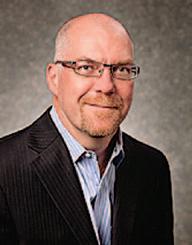
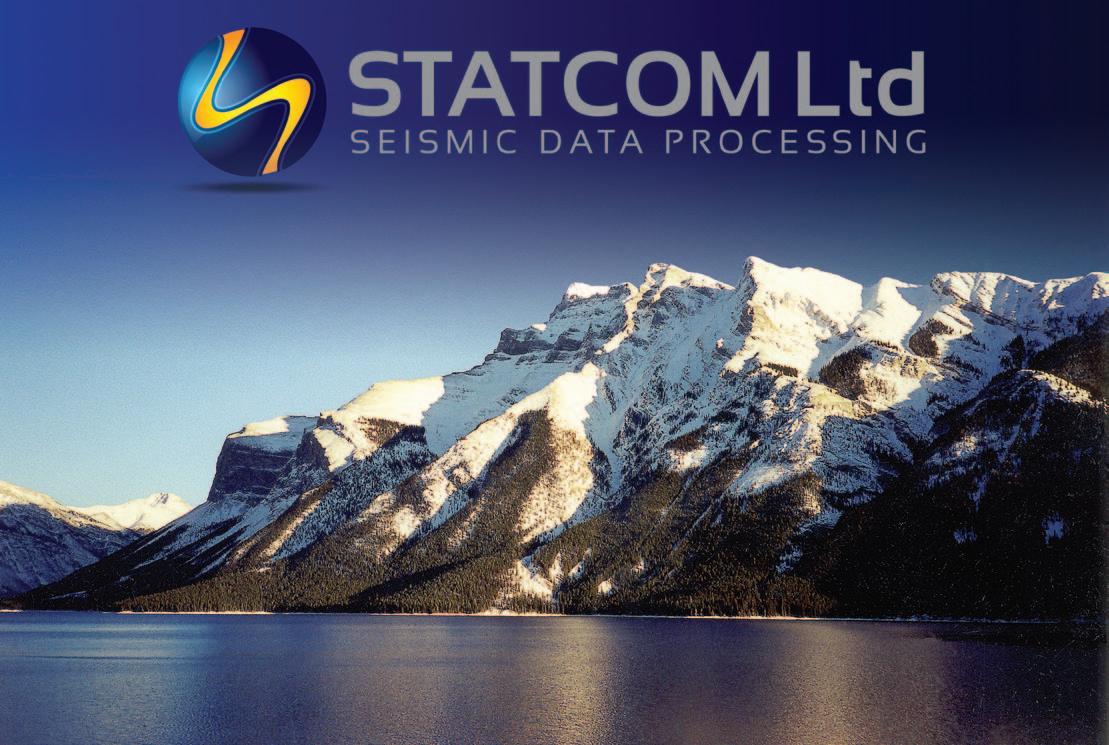


CSPG PROFESSIONAL DEVELOPMENT
SHORT COURSES & FIELD SEMINARS
SHORT COURSES
Rock Creek Stratigraphy, Sedimentology, and Petroleum Geology
Instructor: Doug Cant
Date: May 7th, 2012
Price: $815.00 CDN
Geoscience Writing for Sharing Knowledge
Instructor: Matt Hall
Date: May 7th, 2012
Price: $520.00 CDN
Shale Gas Critical Fundamentals, Techniques, and Tools for Exploration
Instructor: Basim Faraj
Date: May 7th, 2012
Price: $750.00 CDN
Geomechanics Applications in Shale Gas & Oil Reservoirs
Instructor: Safdar Khan
Dates: May 7th & 8th, 2012
Price: $1,400.00 CDN
Exploration for Petroleum in Fold and Thrust Belts - and Beyond
Instructor: Peter Jones
Dates: May 7th - 9th, 2012
Price: $1,085.00 CDN
SAGD Fundamentals - Application of Core, Geology, Geophysics, and Geochemistry to Oil Sands Recovery
Instructors: Rudy Strobl, Milovan Fustic, & Daryl Wightman
Date: May 8th, 2012
Price: $850.00 CDN
Application of Neural Network for Advanced Reservoir Characterization
Instructors: Azer Mustaqeem & Valentina Baranova
Date: May 8th, 2012
Price: $625.00 CDN
Surface Geochemical Exploration for Oil & Gas: Theory, Methods, and Exploration Case Histories
Instructor: Dietmar Schumacher
Dates: May 8th & 9th, 2012
Price: $620.00 CDN
Directional Drilling and Geological Placement
Instructor: Glen Eckert
Date: May 9th, 2012
Price: $885.00 CDN
Subsurface Methods in Clastic Sediments
Instructor: Doug Cant
Dates: May 9th & 10th, 2012
Price: $930.00 CDN
Reservoir Geomechanics in Heavy Oil Recovery Operations
Instructor: Safdar Khan
Dates: May 9th & 10th, 2012
Price: $1,400.00 CDN
Clastic Facies and Depositional Environments in Core
Instructor: Bill Arnott
Dates: May 9th - 11th, 2012
Price: $1,400.00 CDN
Practical Sequence Stratigraphy: Concepts and Applications
Instructor: Ashton Embry
Dates: May 10th & 11th, 2012
Price: $700.00 CDN
Fluvial Stratigraphy
Instructor: John Holbrook
Dates: May 10th & 11th, 2012
Price: $860.00 CDN
Geostatistics for Modeling Geological Heterogeneity and Uncertainty
Instructor: Clayton Deutsch
Dates: May 10th & 11th, 2012
Price: $1,020.00 CDN
Deepwater Petroleum Systems - Reservoir Characterization and Linked Depositional Systems
Instructor: Grant Wach
Dates: May 10th & 11th, 2012
Price: $1,085.00 CDN
Rock Mechanics Essentials for Drilling
Instructor: Safdar Khan
Date: May 11th, 2012
Price: $700.00 CDN
Methodology for Logging Clastic and Carbonate Cores
Instructors: Eva Drivet & Lisa Griffith
Date: May 11th, 2012
Price: $775.00 CDN
Analyzing Unconventional Reservoirs
Instructor: Ross Crain
Date: May 22nd, 2012
Price: $695.00 CDN
Conflict Resolution within the Realm of Oil and Gas Negotiations
Instructor: David Hill
Dates: May 22nd & 23rd, 2012
Price: $850.00 CDN
Sequence Stratigraphy: Principles and Applications
Instructor: Octavian Catuneanu
Dates: May 22nd - 24th, 2012
Price: $1,150.00 CDN

CSPG PROFESSIONAL DEVELOPMENT
SHORT COURSES & FIELD SEMINARS
Mannville Stratigraphy, Sedimentology, and Petroleum Geology
Instructor: Doug Cant
Dates: May 22nd - 24th, 2012
Price: $1,680.00 CDN
Seismic Exploration for Non-Geophysicists
Instructor: Bill Nickerson
Dates: May 22nd - 24th, 2012
Price: $1,625.00 CDN
Log Analysis for Stimulation Design
Instructor: Ross Crain
Date: May 23rd, 2012
Price: $695.00 CDN
Petroleum Geomechanics for Developing Unconventional Resources
Instructors: Pat McLellan & Chris Hawkes
Dates: May 23rd & 24th, 2012
Price: $1,440.00 CDN
Drilling and Production Fundamentals
Instructor: David Hill
Dates: May 24th & 25th, 2012
Price: $850.00 CDN
FIELD SEMINARS
Anastomosing Channel Belt Architecture and Reservoir Considerations of the Modern Columbia River, BC as it applies to the Mannville in West -Central Alberta
Instructors: Peter Putnam & Derald Smith
Dates: May 9th & 10th, 2012
September 5th & 6th, 2012
Price: $1,300.00 CDN
SAGD Fundamentals - Application of Outcrop Analogues, Geology, Geophysics and Geochemistry to Oil Sands Recovery
Instructors: Rudy Strobl, Milovan Fustic & Daryl Wightman
Dates: May 10th & 11th, 2012
Price: $2,400.00 CDN
Anastomosing Fluvial Architecture of the Lower Tertiary Porcupine Hills Formation (Paskapoo Equivalent), Southwest Alberta
Instructors: Peter Putnam & Derald Smith
Dates: May 11th, 2012
September 7th, 2012
Price: $800.00 CDN
Meander Belt Fluvial Architecture and Reservoir Considerations (Upper Cretaceous Dinosaur Park Formation), Southern Alberta
Instructors: Peter Putnam & Derald Smith
Dates: May 18th & 19th, 2012
September 10th & 11th, 2012
Price: $985.00 CDN
Geological Walking Tour
Instructor: Bill Aryton
Date: June 1st, 2012
Price: $200.00 CDN
Tide-Dominated Depositional Environments in the Bay of Fundy, Canada
Instructors: Murray Gingras & Shahin Dashtgard
Dates: June 9th - 12th, 2012
Price: $2,750.00 CDN
Contrasting the Reservoirs of Braided vs. Meandering Depositional Systems
Instructor: Jon Noad
Dates: June 14th & 15th, 2012
Price: $580.00 CDN
Petroleum Geology for Non-Geologists
Instructor: Jon Noad
Date: June 25th, 2012
Price: $325.00 CDN
Stratigraphy and Hydrocarbon Systems of the Sappington (Bakken/Exshaw) and Three Forks Formations in Western Montana
Instructors: Ted Doughty & George Grader
Dates: July 19th - 21st, 2012
Price: $1,375.00 CDN
Structure and Hydrocarbons: A Field Trip from Calgary through Kananaskis Country and Crowsnest Pass to the Rocky Mountain Trench
Instructors: Peter Jones & Peter Hews
Dates: September 6th & 7th, 2012
Price: $1,225.00 CDN
Geology of the Athabasca Oil Sands
Instructors: Murray Gingras & Mike Ranger
Dates: September 6th - 8th, 2012
Price: $3,900.00 CDN
Geology of Horizontal Wells in Liquid-Rich Reservoirs
Instructors: Deborah Sanderson & Andrew Newson
Date: September 7th, 2012
Price: $675.00 CDN
Wabamum, Bakken-Equivalent Exshaw, and Banff Formations in Core, Cuttings, and Outcrop from Southern Alberta
Instructors: Tim Hartel, Willem Langenberg & Barry Richards
Dates: September 14th & 15th, 2012
Price: $750.00 CDN
WIUGC 2012
| By Tannis McCartney and Jacey Seebach
WIUGC 2012, the 48th annual Western Inter-University Geosciences Conference, was held in Regina in early January. Two representatives from the University Outreach Committee traveled there to meet with the delegates.
The conference was well organized, kicking off with a career fair on Thursday afternoon. Many students came by the CSPG booth to learn more about our society and sign up for student membership. Thursday evening everyone headed over to a local pool hall for the “Rock Breaker.”
On Friday morning students had the option of attending one of two field trips: a core logging workshop generously led by Dr. Don kent, or a refinery tour. Friday afternoon several Saskatchewan geoscience professionals gave talks about the work they do. Amongst the technical content was excellent advice for students, such as a push to “create a positive legacy” (Rob M., BPH Billiton); “be experts and know intimately what you are looking for” (Alexandre Aubin, Cameco) and to “keep up with computing technology and data structure to stay ahead as a young geologist” (Bruce Eglington, University of Saskatchewan).
Students from the University of British Columbia, University of Saskatchewan, University of Regina, and University of Manitoba presented their own research on Saturday. The CSPG representatives were pleased to present awards to the two students who gave the best talks related to petroleum and/or sedimentary geology. First prize went to Akhil Ramdoyal, from the University of Manitoba, for his talk entitled,
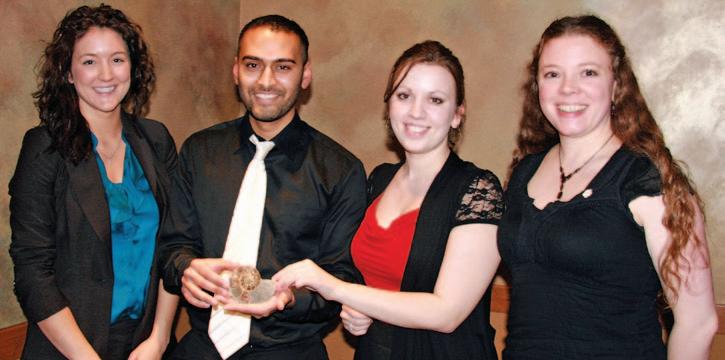
“Lithofacies analysis and petroleum reservoir potential of the Lower Silurian Attawapiskat Formation, Hudson Bay Basin, northeast Manitoba.” Second prize went to Lauren Eggie, also of the University of Manitoba, for her talk entitled, “Lithofacies analysis of the middle unit of the Wymark Member of the Upper Devonian Duperow Formation, southwest Manitoba.”
Both winners are grateful to have been recognized by the CSPG for their work and for our continued sponsorship of this student-oriented conference. Akhil noted that, “The great talks highlighting the most current multi-disciplinary research work of various levels, the insights into the industry, the people you meet – they all define the WIUGC experience. Receiving an award was amazing – the best times are always those times when something good happens when you work without expectations.” For Lauren, “the conference was a really great
opportunity to meet new people in my field and to see how their practices and programs compare to the University of Manitoba. It was really nice to practice my presenting skills, and it meant a lot for those skills and my research to be recognized. That professionals see the merit of my work and research is a huge compliment, and confirms for me that I am on the right track!”
The WIUGC 2012 organizing committee members are to be commended for all of their work organizing the conference and for being such wonderful hosts. The students from UBC who will organize WUIGC 2013 have big shoes to fill, but considering they won the inaugural Don kent Enthusiasm Award this year (for the “university who demonstrated the most spirit and enthusiasm towards geology and among their peers throughout the conference”), next year’s conference promises to be a good one too!
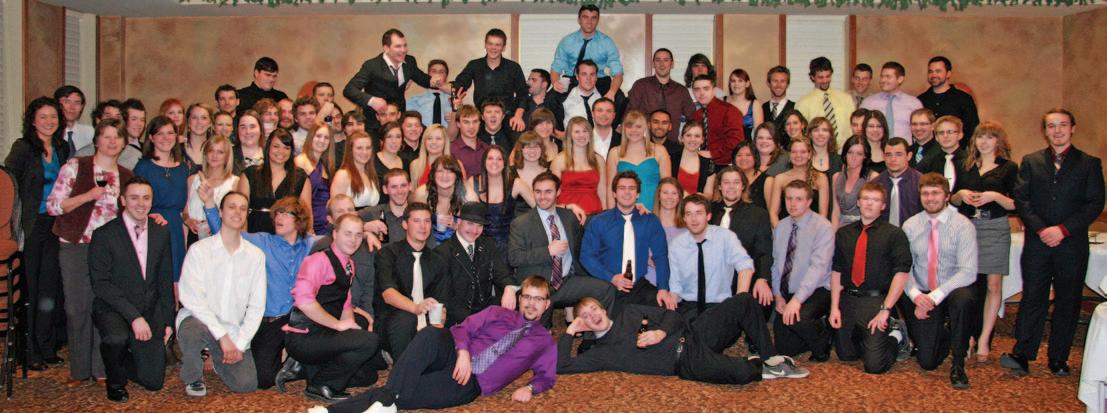
University Outreach committee members Jacey Seebach (left) and Tannis McCartney (right) with award winners: Akhil Ramdoyal and Lauren Eggie.
G EO C ONVENTION 2012: V ISION
M AY 14-18, 2012

TELUS C ONVENTION C ENTRE & ERCB C ORE R ESEARCH C ENTRE , C ALGARY, AB
Join thousands of fellow industry professionals this May as GeoConvention 2012: Vision brings together an exciting week-long program of technical sessions, posters, a sold-out exhibit floor, core conference, and of course fun networking events, including the ever-popular Core Meltdown windup party. The 2012 Convention Committee is working hard to ensure this year’s event is bigger and better than ever, and here are just some of the developments that delegates can enjoy this May.
NEW S TUDENT E VENTS
Today’s students are tomorrow’s industry leaders, and GeoConvention 2012 will honour these delegates by giving them access to an unparalleled array of networking and social events, such as a Student luncheon on Wednesday, May 16, which will allow students to network with geoscience professionals, and the popular Challenge Bowl that will pit University students in a head-to-head trivia contest Wednesday evening. New this year, the Convention will be offering assistance to students who would not otherwise be able to afford to attend the Convention, and, as ever, there are numerous volunteer opportunities for students who wish to get involved – an eight-hour commitment results in free registration for the convention. There are still sponsorship opportunities available for student events – please contact Alyssa Middleton at sponsor@geoconvention. com if your company would like to get involved.
T ECHNICAL PROGRAM
2012 session chairs have been actively soliciting papers for this year’s convention, and are looking to build interesting and informative sessions on everything from Tight Oil and Gas, to Microseismic,
to Rock Physics. In additional to traditional sessions, this year’s program will also feature integrated sessions as well as special sessions honouring the contributions of Dr. Eric Mountjoy and Dr. Cindy Riediger.
S PECIAL E VENTS
Two exciting speakers will be addressing the Convention this year; on Monday, May 14 Dr. Michael Byers will discuss sovereignty issues in the Arctic and
(Continued on page 29...)
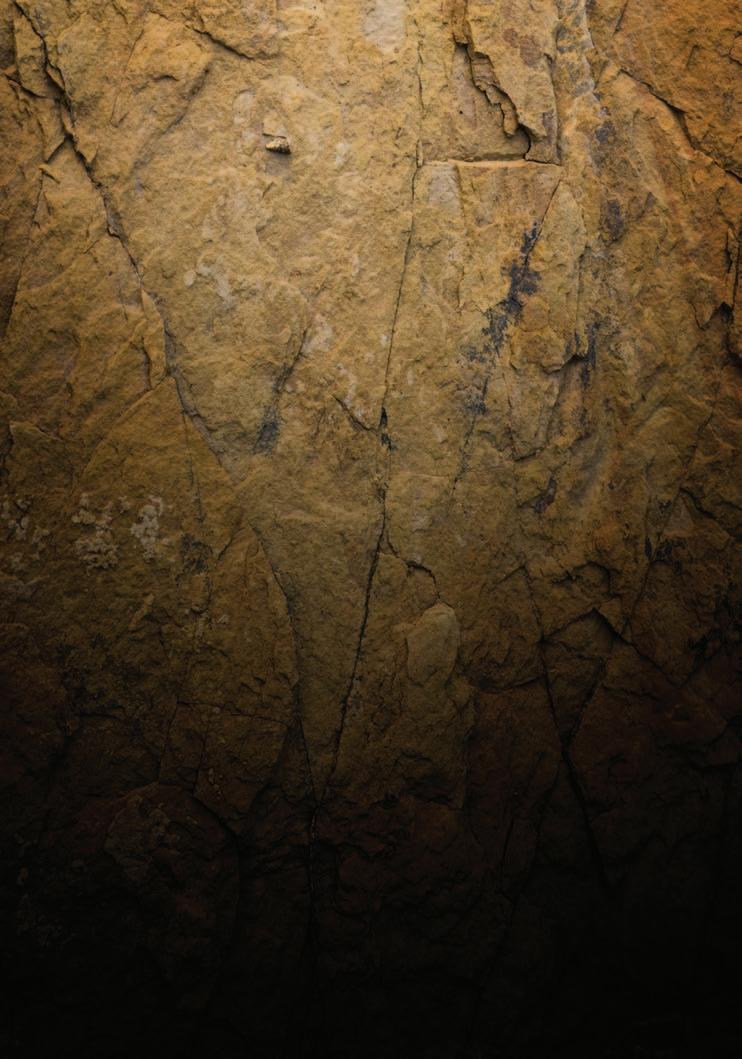
FOCUSON DECISIONS DATANOT


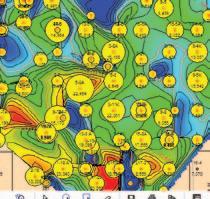


WellData@tgsnopec.com to learn more about TGS’ well data library that includes production data, directional surveys and the largest online collection of well logs.
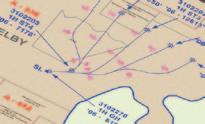
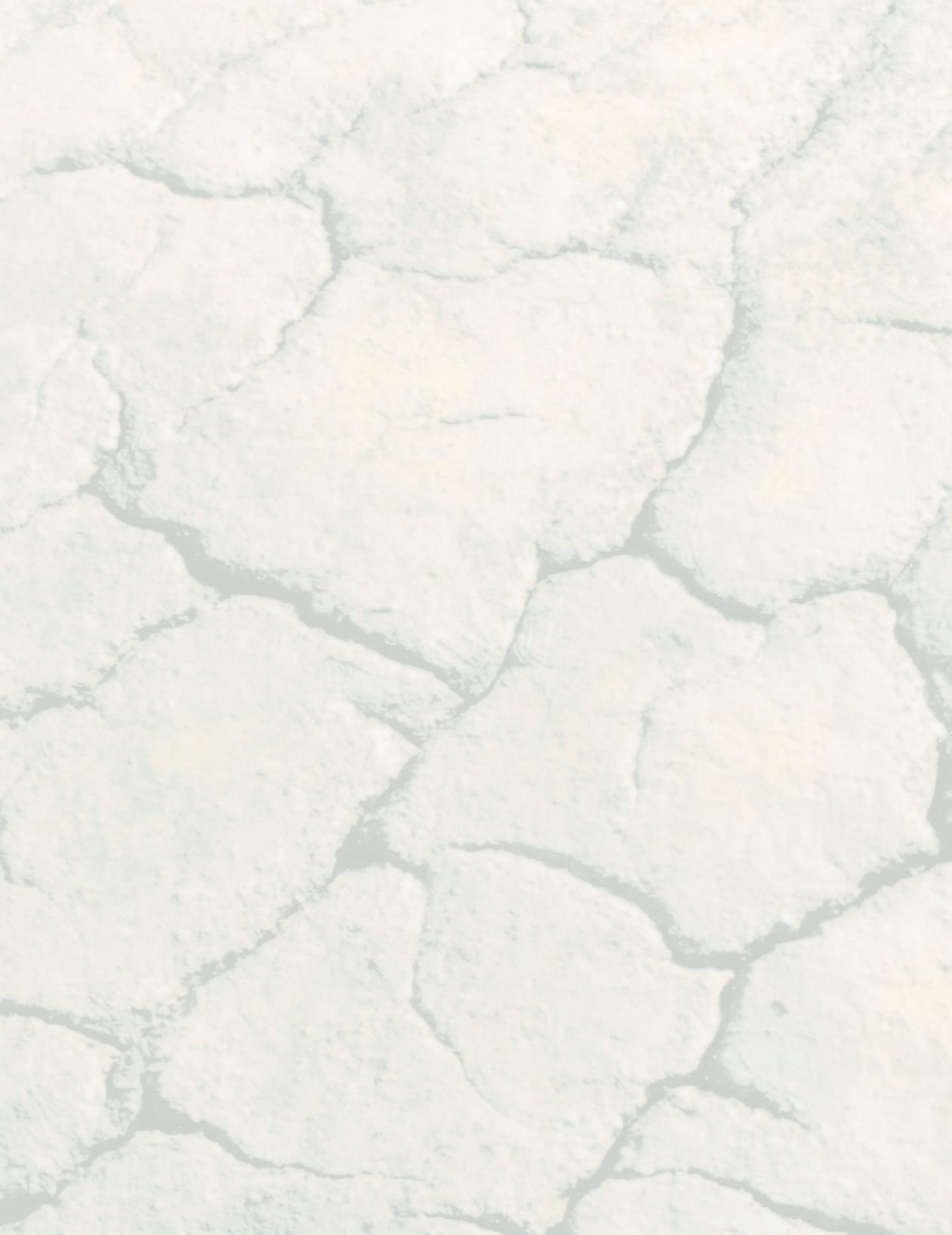
GO TAKE A HIKE
Elbow Lake – Sheep Lakes, Kananaskis Country, AB
| By Margot McMechan and Christine Nygren
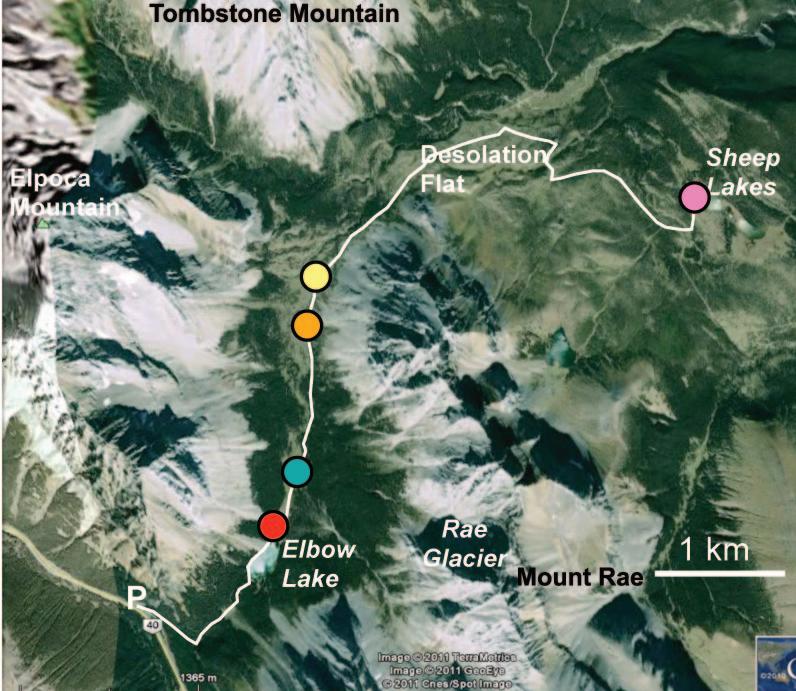
Elbow Lake is a popular hike and backcountry camping destination, especially for families and fishermen. Although some sections of the trail climb fairly steeply, it is wide, relatively smooth, and a short distance. From Elbow Lake an easy route takes hikers and bikers to Sheep Lakes. Travel through the section immediately north of Elbow Lake is faster after the spring/early summer runoff.
The geology and topography of this part of the Rocky Mountains is dominated by resistant ranges held up by fault repeats of upper Paleozoic carbonate and quartzite separated by valleys eroded into softer Mesozoic sandstone and shale. The scenic western part of the route follows an older glacial valley cut across the northwest-trend of mountain ranges formed by resistant carbonate strata carried on the Rundle and Misty thrust faults. In contrast, the eastern part mainly crosses a glacial floodplain formed above Mesozoic clastic rocks.
G.M. Dawson explored the area in 1884. He named Tombstone Mountain because the pinnaclelike slabs near the summit looked like tombstones, while Desolation Flat was so named because he thought the standing blackened and bleached tree trunks in the area were desolate in the extreme.
The short hike to Elbow Lake is mainly in the trees. Fossil corals and byrozoa can be found in the dark limestone talus beside the trail where it crosses the toe of an avalanche chute.
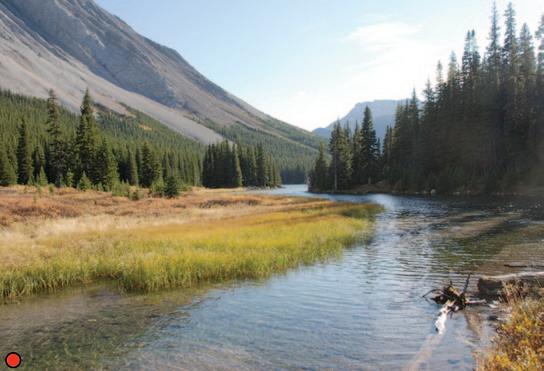
trailhead: Proceed 62 km south of Trans-Canada Highway on Highway 40, turn left at Elbow Pass parking lot (P).
distance: Approximately 1.3 km with 150 m elevation gain to Elbow Lake; 6.3 km junction with Sheep Trail; 9.2 km junction with narrower trail to Sheep Lakes; 9.9 km with 25 m net elevation loss to Sheep Lakes.
Elbow Lake forms the headwaters of the Elbow River, one of the main sources of drinking water for the city of Calgary.
Views of Upper Devonian to Mississippian carbonate and lesser shale dominate the skyline from Elbow Lake to Desolation Flat. In the valley bottom, hummocky terrain near the junction of Piper Creek marks a much older position of the moraine in front of the Rae Glacier. Unlike the mature forest near Elbow Lake only pockets of small trees occur. This is largely because chinook winds blast through the valley from here to Desolation Flat whereas the Elbow Lake area is relatively protected from the chinook winds.
A small canyon cut into light grey-weathering Mississippian limestone of the Livingstone Formation (orange dot on location map) marks a good area to look for crinoid fragments in the rock. Hiking a bit further provides a spectacular view up Piper Creek. Strata in the Opal Range and west of the creek have been carried on the Rundle Thrust up and over the same rock units exposed east of the creek on Tombstone Mountain.
Sheep Lakes occur in an upland area along the drainage divide between the Elbow and Sheep rivers with the north lake draining into the Elbow River and the southern lake into the Sheep River.
references:
Dawson, G.M. 1886. Geological and Natural History Survey of Canada, Annual Report (New Series), v. 1, 1885, p. 1B-169B. McMechan, M.E. 1995. GSC Map 1865A.
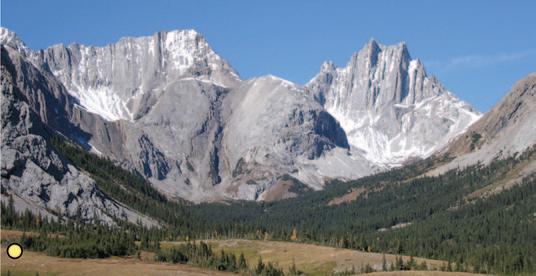
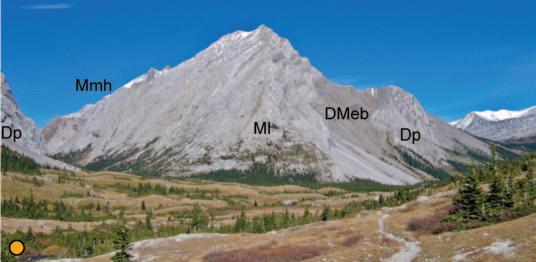
by
Photo
North end of Elbow Lake and the headwaters of the Elbow River.
View to Tombstone Mountain. Light grey limestone of the Livingstone Formation forms the mountain peak. Dp Palliser Formation (limestone), DMeb Exshaw and Banff formations (shale, limestone), Ml – Livingstone Formation, Mmh Mount Head Formation (limestone).
View northwest up Piper Creek to the Opal Range. The Rundle Thrust runs along the west side of the creek
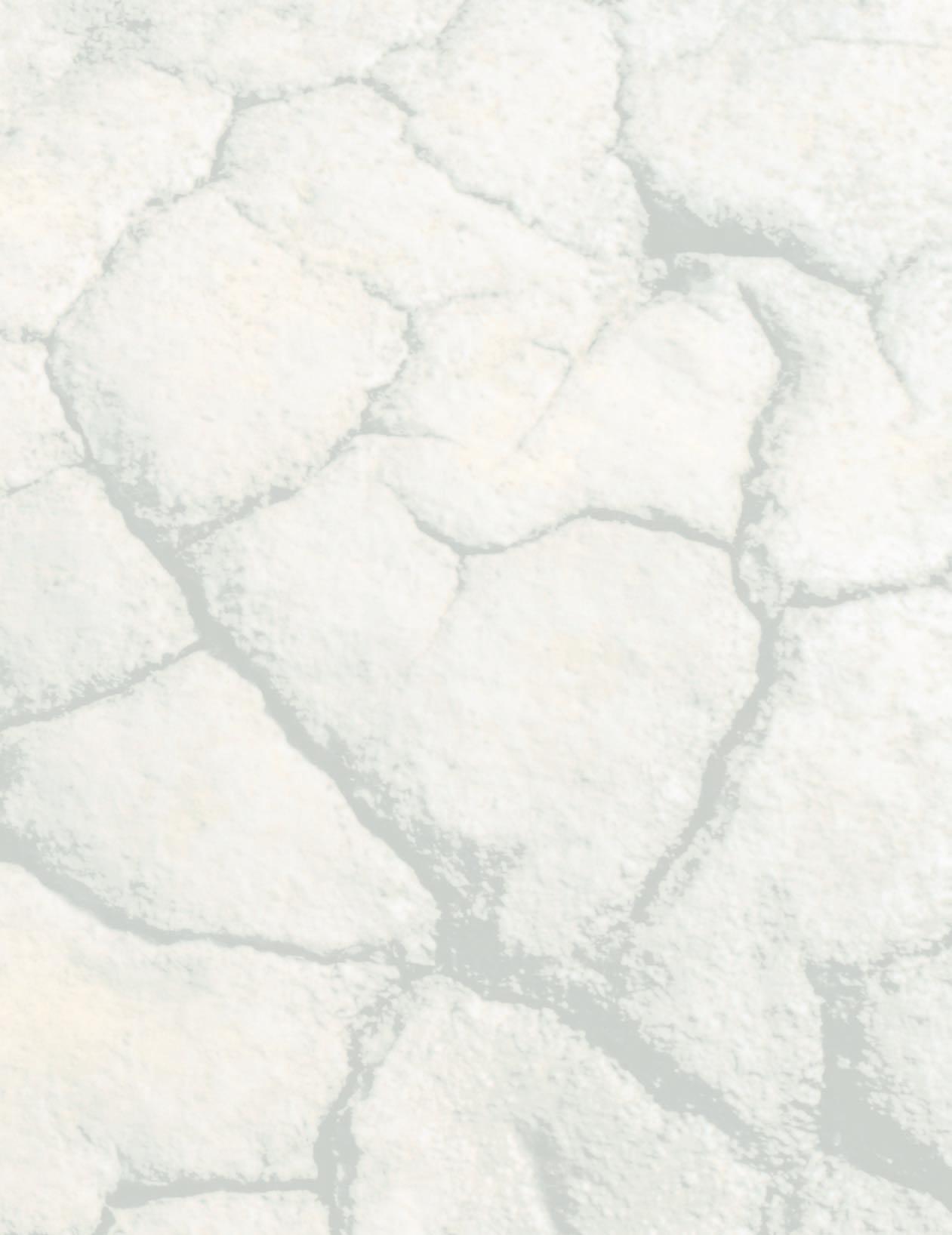
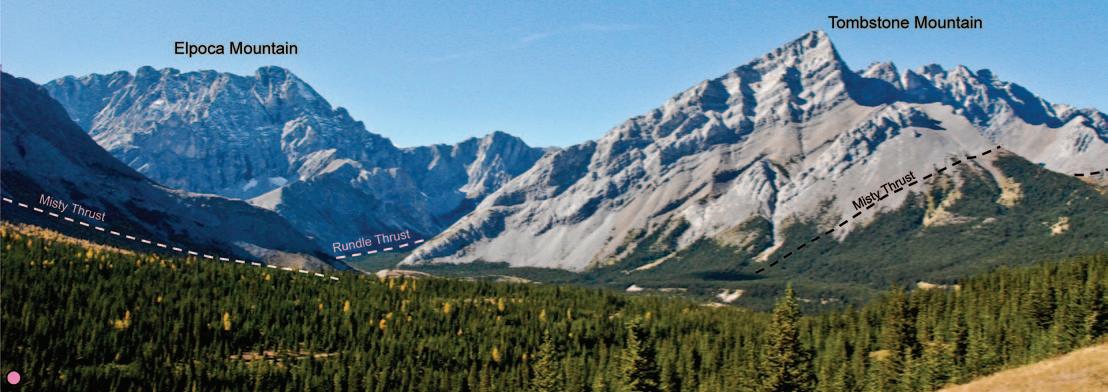
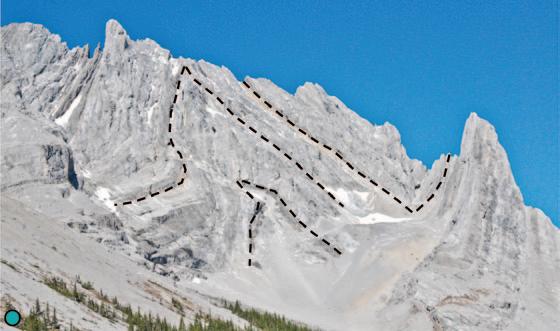
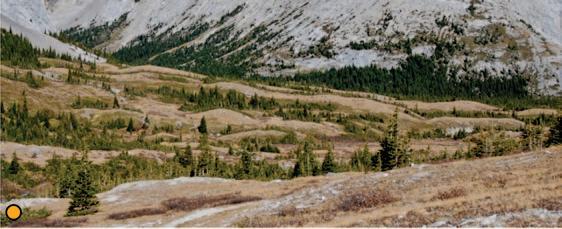
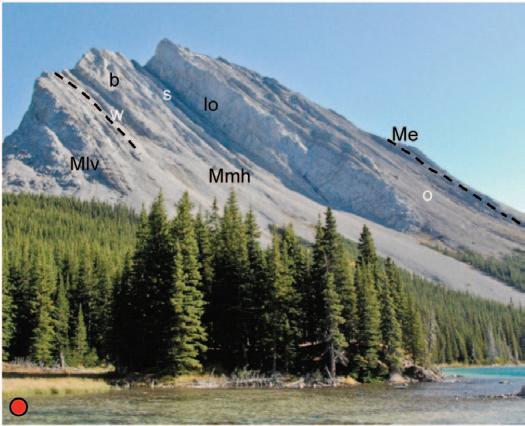
above left: Anticline and syncline fold pair on Mount Elpoca. above right: Carbonates of the Mississippian Livingstone (Mlv), Mount Head (Mmh), and Etherington formations exposed south of Elbow Lake. The banded lower part of the Mount Head consists of alternating recessive silty (w,s) and resistant members (b, lo). Dark fossiliferous limestone (o) form most of the upper Mount Head. left: Hummocky moraine along Elbow River marking the previous extent of the Rae glacier. Below: View across north Sheep Lake to Mount Burns and upper Paleozoic carbonate and quartzite strata carried in the McConnell thrust sheet.
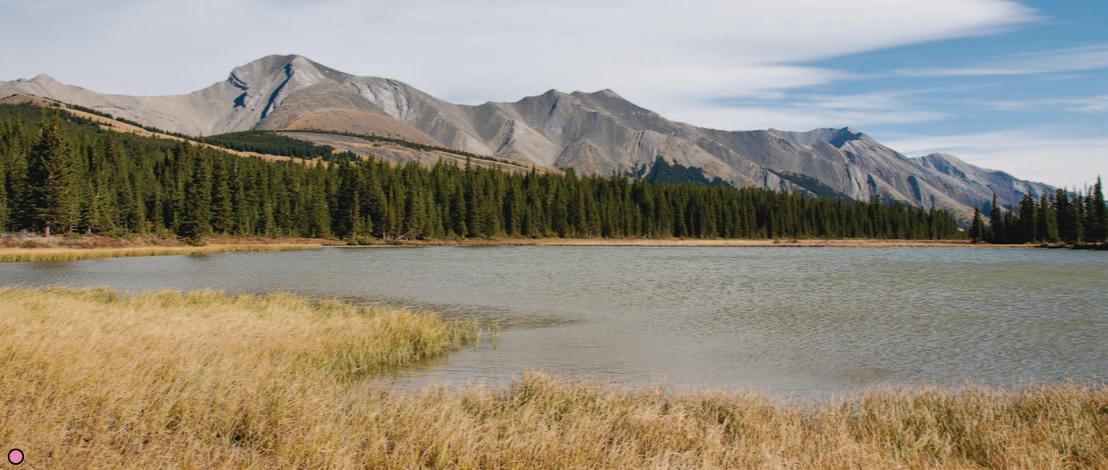
Elpoca and Tombstone mountains and the upper Elbow River. Livingstone Formation limestone carried on the Rundle and Misty thrusts forms the crest of both mountain ranges.
UPCOMING EDUCATION SCHEDULE
Last Chance Short Courses
Exploring the Geopressure Risk in Deep Water Frontier Plays - An AAPG E-Symposium
Live Webinar - 2:00 p.m., CST
Basic Well Log Analysis
March 15, 2012
March 26-30, 2012 Austin, Texas
Practical Salt Tectonics
March 28-30, 2012 Austin, Texas
Field Safety Course for Field Trip Leaders
March 28-29, 2012 Houston
, Texas
Summer Education Conference
June 18-22, 2012 Fort Worth, TX
Basic Well Log Analysis
July 23-27, 2012 Golden, CO
Field Seminars
Lacustrine Basin Exploration
Begins and ends in Salt Lake City, Utah
Northern Appalachian Basin Faults, Fractures and Tectonics
Begins and ends in Watkins Glen, NY
Seismic Interpretation of Compressive Structures
Begins and ends in Calgary, AB, Canada
Fractures, Folds, and Faults in Thrusted Terrains
Begins and ends in Great Falls, MT
Download
June 17-23, 2012
June 18-22, 2012
July 22-28, 2012
July 23-28, 2012
INDUSTRY BULLETIN 2012-02
BC Oil and Gas Commission to Assume Responsibility for Core Storage
The BC Oil and Gas Commission (Commission) is taking over staffing responsibilities at the Charlie Lake core storage facility from the Ministry of Energy and Mines as of April 1, 2012. The Charlie Lake core storage facility is the provincial repository for oil and gas related core and drill cutting samples. This facility is critical to oil and gas development and provides a public archive and access to cores and cuttings.
The current facility was initially built in the late 1950s. There have been five major warehouse expansions, the latest being completed in 2000. Due to high levels of activity in the last decade an expansion of core storage capacity is now required. The current site will be retained to house the existing core, and the Commission will be constructing a new warehouse and core viewing facility in Fort St. John where all future core will be stored. There will be no change in service levels during this transition.
As part of the process, the Commission is interested in receiving input from industry clients regarding the future facility. Input is requested regarding layout as well as services and amenities that assist clients in their use of the core facility.
Please forward any suggestions regarding the facility or questions you may have regarding this Industry Bulletin to:
Mark Hayes Technical Leader - Resource Assessment
BC Oil and Gas Commission
Mark.Hayes@bcogc.ca 250-419-4431
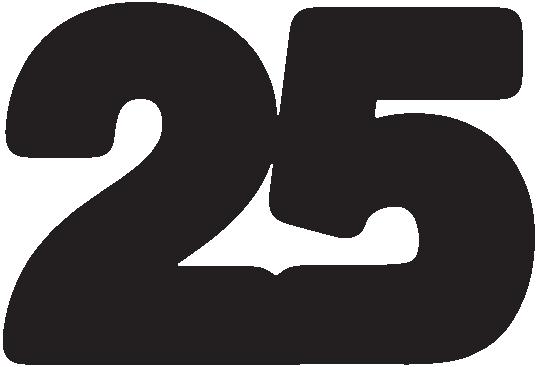

(...Continued from page 25)
on Tuesday, May 15 General Romeo Dallaire will discuss his experiences. Full biographies of both speakers may be found at www.geoconvention.com. Book your tickets early for these events as they are sure to sell quickly.
R EGISTER M ARCH 1
Delegate registration for GeoConvention 2012: Vision opens March 1 – register online at www.geoconvention.com to qualify for early bird pricing and secure your tickets to popular special events. Early bird pricing is only in effect until March 30, so book online early!
Visit www.geoconvention.com and follow us on twitter @geoconvention for up-todate information on events this May!







2011 CSPG T RACKS AWARDS
Tracks Awards are presented annually to CSPG members who have made outstanding contributions to the Society through committee or other work. The award is designed to recognize individuals who have set new standards of excellence within the Society. The recipients of the 2011 awards are David Garner, Greg Lynch, Dennis Meloche, Trent Rehill, and Bob Potter.
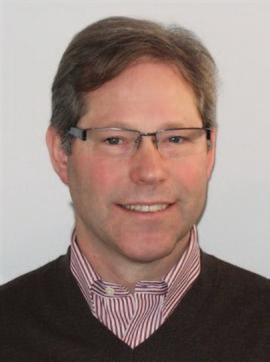
David Garner, P.Geoph. has been a CSPG volunteer since 1995. He started as a member of the Electronic Communications committee and has since held positions on the Geomodeling Technical Division (ten years as a member and Chair), Executive Board of Directors (Assistant Finance Director, 2008 and Finance Director 2009) and the 2011 Gussow Geoscience Conference (Chair). He has been a Technical Presenter and Session co-Chair at the annual geoConventions and has also presented at Division Talks. As Chair of the 2011 Closing the Gap: Advances in Applied Geomodeling for Hydrocarbon Reservoirs conference, he spent a year planning, overseeing, and finally executing the most successful Gussow conference to date. The geomodeling theme brought 134 delegates from around the world to Banff in October of 2011. David has raised the presence of CSPG on the international stage though his dedication in this role.
Greg lynch, P.Geol. has been involved in many CSPG programs and services for over twelve years. He was involved with the Student Industry Field Trip (SIFT) for 11 years and has been an Associate Editor of the Bulletin of Canadian
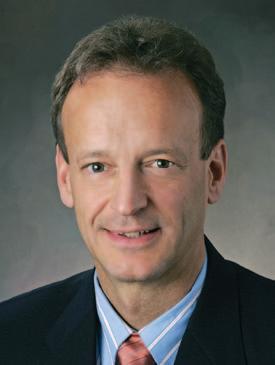
Petroleum Geology in the early 2000’s. Greg volunteered as a CSPG Director for multiple terms as Assistant Outreach Director (2007), Outreach Director (2008), Assistant Finance Director (2009) and Finance Director (2010). He has also been involved heavily with the Outreach portfolio on the Honorary Address and Earth Science for Society committees and has presented papers and abstracts at the GeoConvention, in the Bulletin of Canadian Petroleum Geology and other publications, and at CSPG Technical Luncheons. He received his B.Sc. from the University of Ottawa, his M.Sc. from Washington State and his Ph.D. from the University of Alberta (all in Geology). Greg currently serves as a CSPG representative on the GeoConvention committee.
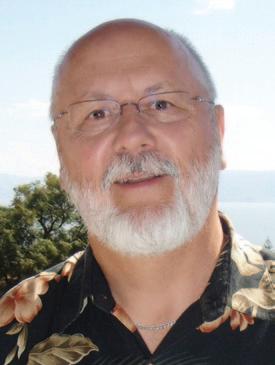
convention committees. He has been running field trips for the Society for over eight years. As the Field Seminar Leader for the 2010 International Core Conference Dennis introduced a group of higher-level courses that helped to raise the profile of the CSPG Education program. Education is one of the most important aspects of the Society and Dennis helped with its revitalization. Dennis received a Ph.D. in Biogeochemistry from the University of Western Ontario in 1981. He has 31 years of domestic and international oil and gas experience, with more than half of it spent in the role of technical service and support. He is currently the Senior Clastics Advisor for Devon Canada Corporation. In his various technical service roles, he has provided technical mentorship to both his employers and the geological community as a whole (CSPG, Mount Royal, U of C).
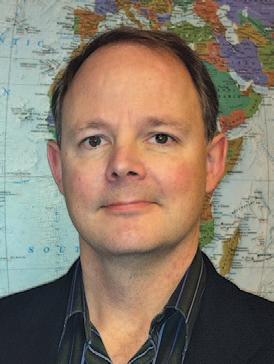
Dennis Meloche, P.Geol. has been a member of the CSPG since 1975. He was a founding member of the Clastic Petrology Technical Division in the mid-1980s and has sat on other Technical Divisions and
trent r ehill has been designated a P.Geol. as a q ualified Reserve Evaluator by the Division of Professional Affairs, AAPG. He has been co-Chair of the CSPG International Technical Division since 2008. Along with co-Chair and fellow Tracks Award recipient Bob Potter, the two have revitalized the Division with regular monthly meetings with attendance often well over 100. The presentations are high quality and cover all parts of the globe where oil and gas E&P is happening. The meetings of the International Technical Division have become “the place to be” for Calgary-based geoscientists involved in international E&P, both to learn and to network. Trent is currently Vice President of Geoscience at kulczyk Oil Ventures, an international E&P company. Also a
David Garner
Greg Lynch
Dennis Meloche
Trent Rehill
Director of k ainji International, he has 17 years in exploration, development, and asset management geoscience; 13 years of international assignments; and four years of domestic Canadian experience. Trent graduated with a Bachelor of Science (Honours) in geology from the University of Manitoba, Canada in 1992 and completed his Ph.D. in Petroleum Geology at Dalhousie University, Canada in 1996.
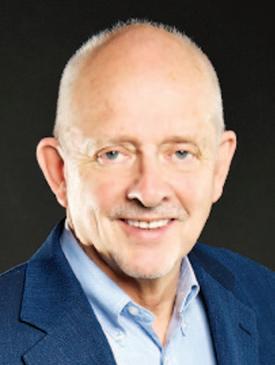
Bob Potter, P.Geol. has been coChair of the CSPG International Technical Division since 2007. He is President and founding principal of GeoChemTech Inc. and a professional explorationist and manager with extensive experience in leading edge technology and multidisciplinary technical teams. His experience includes work in exploration and development in sedimentary basins of Canada, Sudan, Argentina, Thailand, and k azakhstan. During the past 40 years, Bob has developed and implemented exploration and business processes that have resulted in the discovery of resources over 280 million barrels of oil equivalent. He understands the application and integration of multiple data sets to reduce risk and to maximize success. In addition, Bob served four years on the Board of Directors of a public geophysical company listed on the Toronto Stock Exchange. He participated in the organization of the World Petroleum Congress in 2000, the planning of the Calgary Millennium Park in 2000, the preparation of the Upper Cretaceous chapter for the 2001 Natural Gas Potential in Canada report, and the creation of the Eau Claire Community Association.
2011 CSPG PARTNERSHIP T RACKS AWARD
The Partnership Tracks award is presented to non-CSPG members or non-geologists who have made outstanding contributions to the welfare and prestige of CSPG.
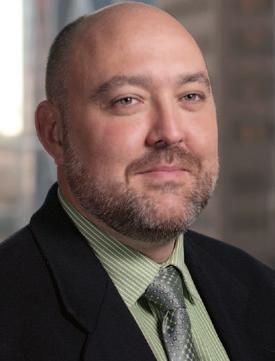
The 2011 award is granted to r ob McGrory, P.Geoph. for his work as the Canadian Society of Exploration Geophysicists (CSEG) general co-Chair of GeoConvention 2011: recovery.
recovery 2011 was a tremendous success. Rob played a substantial role in helping meet and exceed the budgeted financial goals for the participating member societies of the convention (CSPG, CSEG, CWLS). Along with Paul Mac k ay, CSPG general co-Chair, the two spearheaded the initiative to make integrated technical sessions much more important within the technical program of the convention. Rob worked closely with fellow co-Chairs, Technical co-Chairs and the rest of the volunteers, giving them authority to make decisions and take initiative. All of these ingredients led to the making of one of the most successful GeoConventions to date.
Rob received a B.Sc. in Geophysics from the University of Toronto. He is the Founder and President of TerraWR x Exploration Consultants Ltd. He has worked in areas throughout the world including New Zealand, South America, Turkey, Egypt, Europe, Indonesia, and several parts of Africa. He has been a member of the Joint Annual Convention Committee (JACC) /GeoConvention committee since 2007 and currently sits as their General Chair.

Bob Potter
Rob McGrory
ROCK SHOP
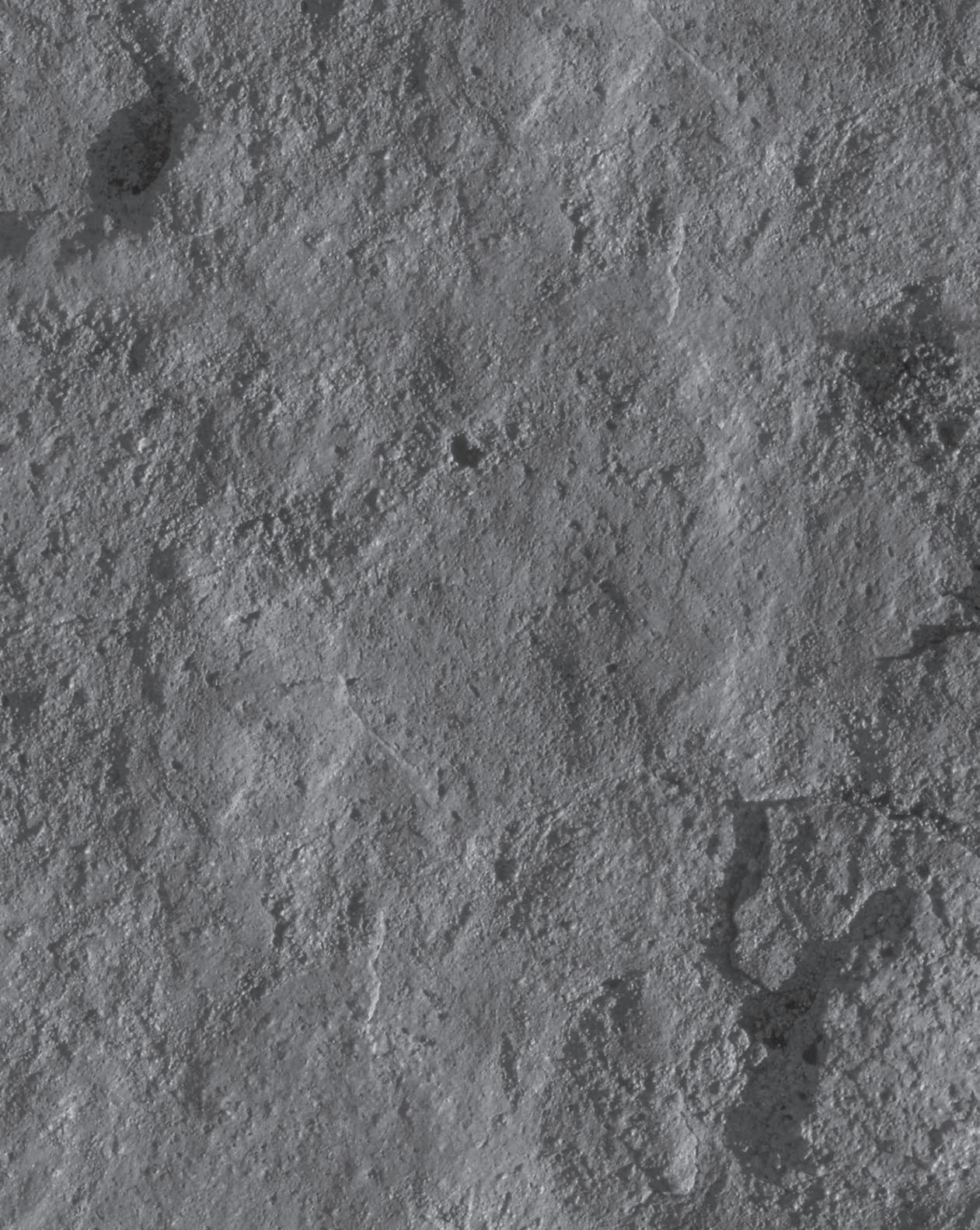










PHOTO OF THE MONTH
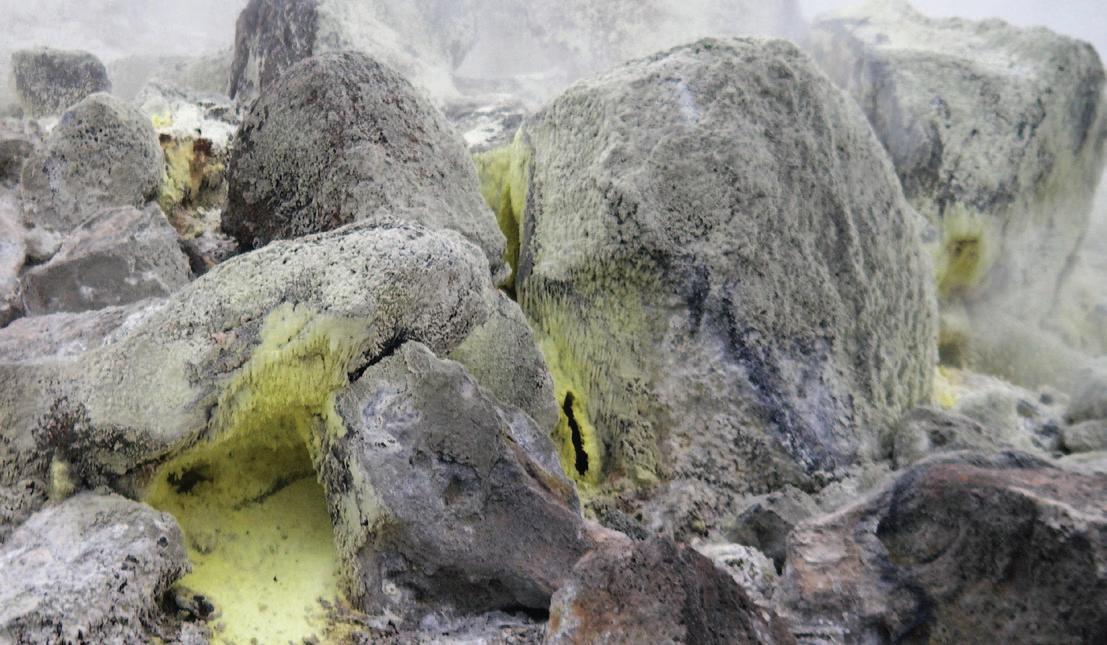
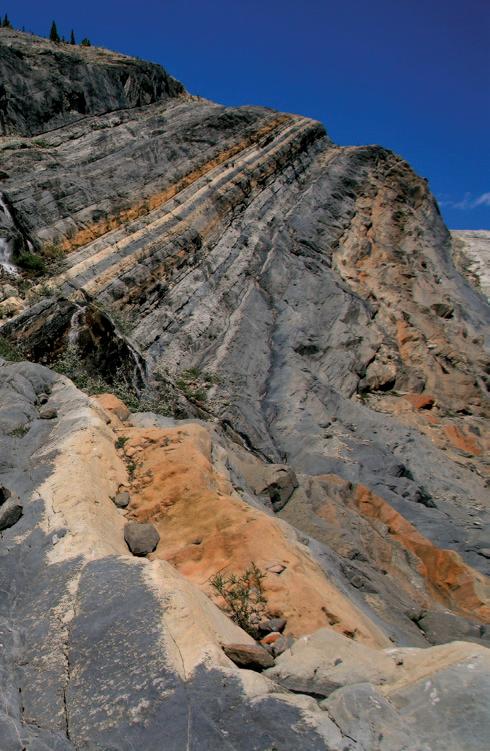
GEOCONVENTION 2012: Vision
Calgary TELUS Convention Centre n Calgary, Alberta, Canada
REGISTER NOW
And join thousands of industry professionals at GeoConvention 2012: Vision in Calgary May 14 - 18 at the Calgary TELUS Convention Centre.
n Early bird deadline is March 30, 2012 - register online today!
n Registration includes: admission to the exhibition hall and Earth Science for Society exhibition, access to the technical program, poster sessions, Core Conference, Monday night icebreaker and Tuesday night reception on the exhibit floor
n On Monday, May 14 Professor Michael Byers will speak on sovereignty issues in the Arctic while General Romeo Dallaire will discuss his experiences Tuesday, May 15th at the Hyatt Regency Hotel. Purchase your tickets for these and other events like the annual Core Meltdown early in order to avoid disappointment – they will sell out!
n Register online at www.geoconvention.com, and follow us on twitter @geoconvention to get all the latest updates on events happening this May!






Active sulphur fumaroles occur along the collapsed rim of Kilauea volcano, Hawaii Volcanoes National Park. Photo by Jim Reimer.
CORPORATE MEMBERS
ALLEN GEOPHySICAL CONSULTING LTD
APACHE CANADA LTD
APEGGA
BAkER ATLAS
BDO CANADA LLP
BLACk SWAN ENERGy
BLUEBACk RESERVOIR
CANADIAN NATURAL RESOURCES LTD
CASE y & ASSOCIATES
CENOVUS
CSEG FOUNDATION
CONOCOPHILLIPS CANADA LIMITED
DEVON CANADA CORPORATION
ENCANA
ENERPLUS CORPORATION
E xxON MOBIL UPSTREAM RESEARCH COMPANy
GEOLOGIC SySTEMS LTD
GEOSTRATA RESOURCES INC.
GEOVARIANCES
HALLIBURTON
HUNT OIL COMPANy OF CANADA
HUSky ENERGy INC.
IHS
IMPERIAL OIL RESOURCES
JEWELSUITE
LITTLE ROCk DOCUMENT SySTEMS
LORING TARCORE LABS
MJ SySTEMS
MURPHy OIL COMPANy
NE xEN INC
PARADIGM
PENN WEST PETROLEUM LTD
PETROCRAFT PRODUCTS LTD
PLUSPETROL S.A.
ROkE TECHNOLOGIES
ROx AR
RPS ENERGy CANADA LTD
SCHLUMBERGER
SHELL CANADA LIMITED
S PROULE ASSOCIATES LIMITED
SUNCOR ENERGy INC .
TALISMAN ENERGy INC
TOTAL E&P CANADA LTD.
TOURMALINE OIL CORP
UNITED OIL AND GAS CONSULTING
WEATHERFORD LABORATORIES
AS OF FEBRUARY 10, 2012
CSPG welcomes our 2012 Corporate Members! The benefits of being a corporate member include:
• Recognition in the monthly Reservoir and quarterly Bulletin
• One associate membership
• Reserved tables at the technical luncheons with your company logo
• One free pass to the CSPG Core Conference …and more! Contact Kasandra Klein at kasandra.klein @ cspg.org to be a corporate member today!
May 13 – 15, 2012 thousands of students, teachers, and general public will attended the Earth Science for Society Exhibition (ESfS), a public outreach program of the annual GeoConvention. The ESfS Exhibition will again be held at the Calgary TELUS Convention Centre and showcases handson activities and dynamic demonstrations about the Earth Sciences for people of all ages and interests.
Sunday, May 13: 12noon – 5:00PM Monday, May 14: 9:00a M – 4:00PM tuesday, May 15: 9:00a M – 4:00PM
CSPG Members and their families and friends are encouraged to attend the Family Event on May 13th, 2012! We will be giving away cupcake coupons to the first 100 mothers and we have many other giveaways and draws for the whole family. Admission is FREE!
For more information visit our website www.geoconvention.com/esfs or email us at esfsinfo@geoconvention.com
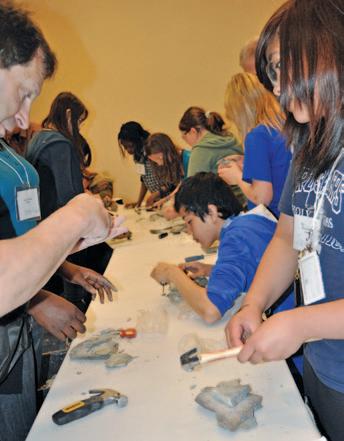
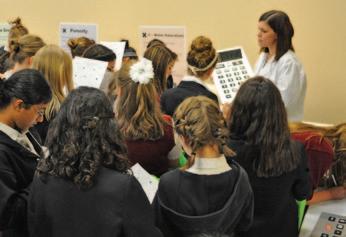
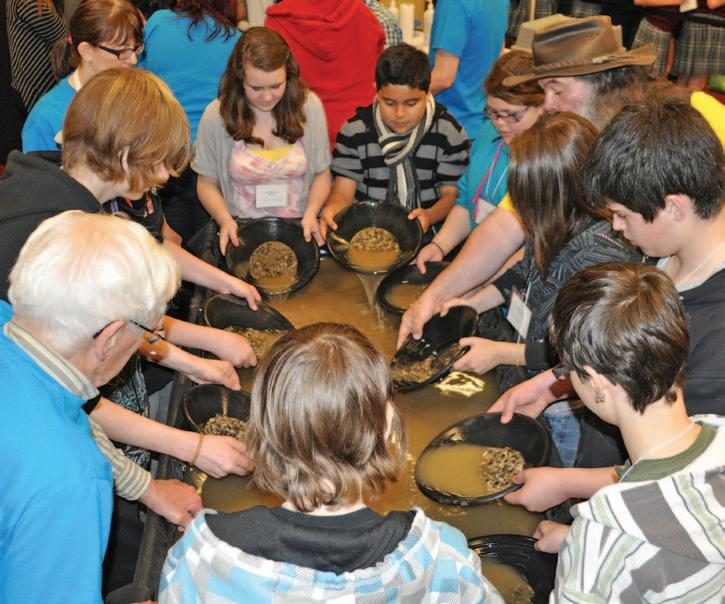

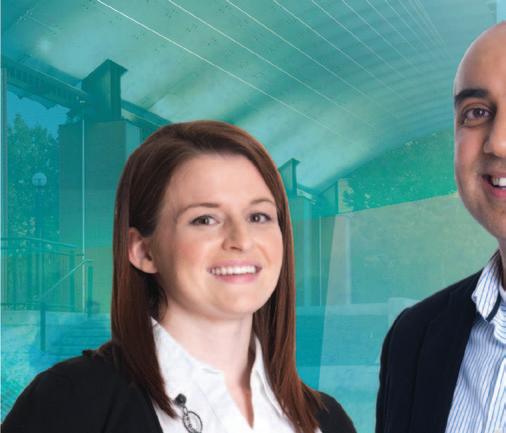




























The Blueback Toolbox
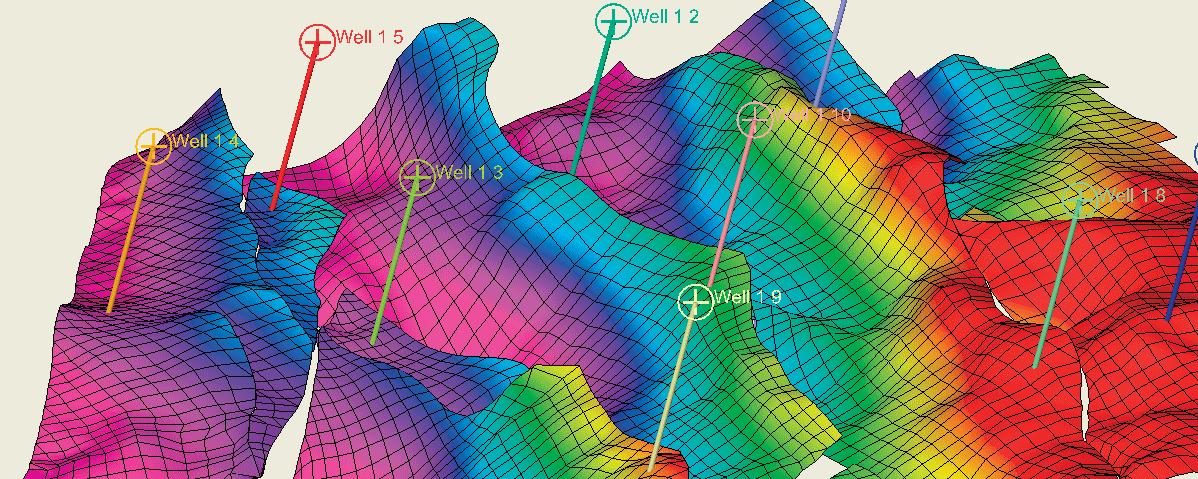
The Blueback Toolbox suite of Petrel* plug-ins contains Petrel functionality features that are not available in standard Petrel. The Blueback Toolbox contains 5 modules where all features has been developed based on request from Petrel users around the world.
GEOLOGY
- Facies proportion maps
- 3D grid QC
- Fault info
GEOPHYSICS
- Merge 3D cubes
- Dip indicator
- Frequency spectrum
PROJECT MANAGEMENT
- Project report
- Project scanner
- Import interpretation
RESERVOIR ENGINEERING
- Sw modeling
- Interactive well picker
- Contact back calculation
SEISMIC RESERVOIR CHARACTERIZATION
- Seismic net pay workflow
- AVO Classification
- Colored Inversion
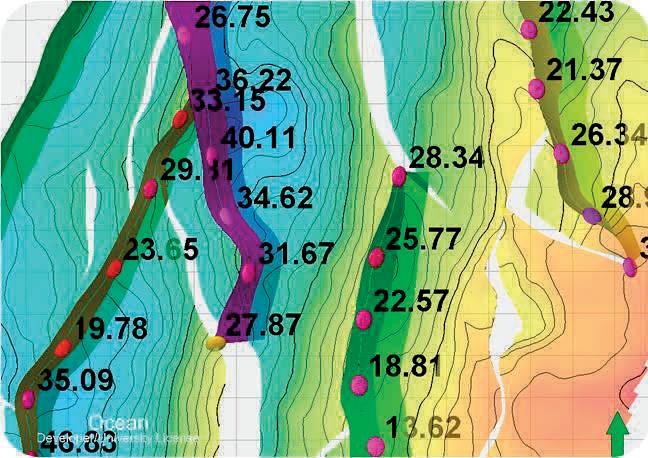
*Mark of Schlumberger
